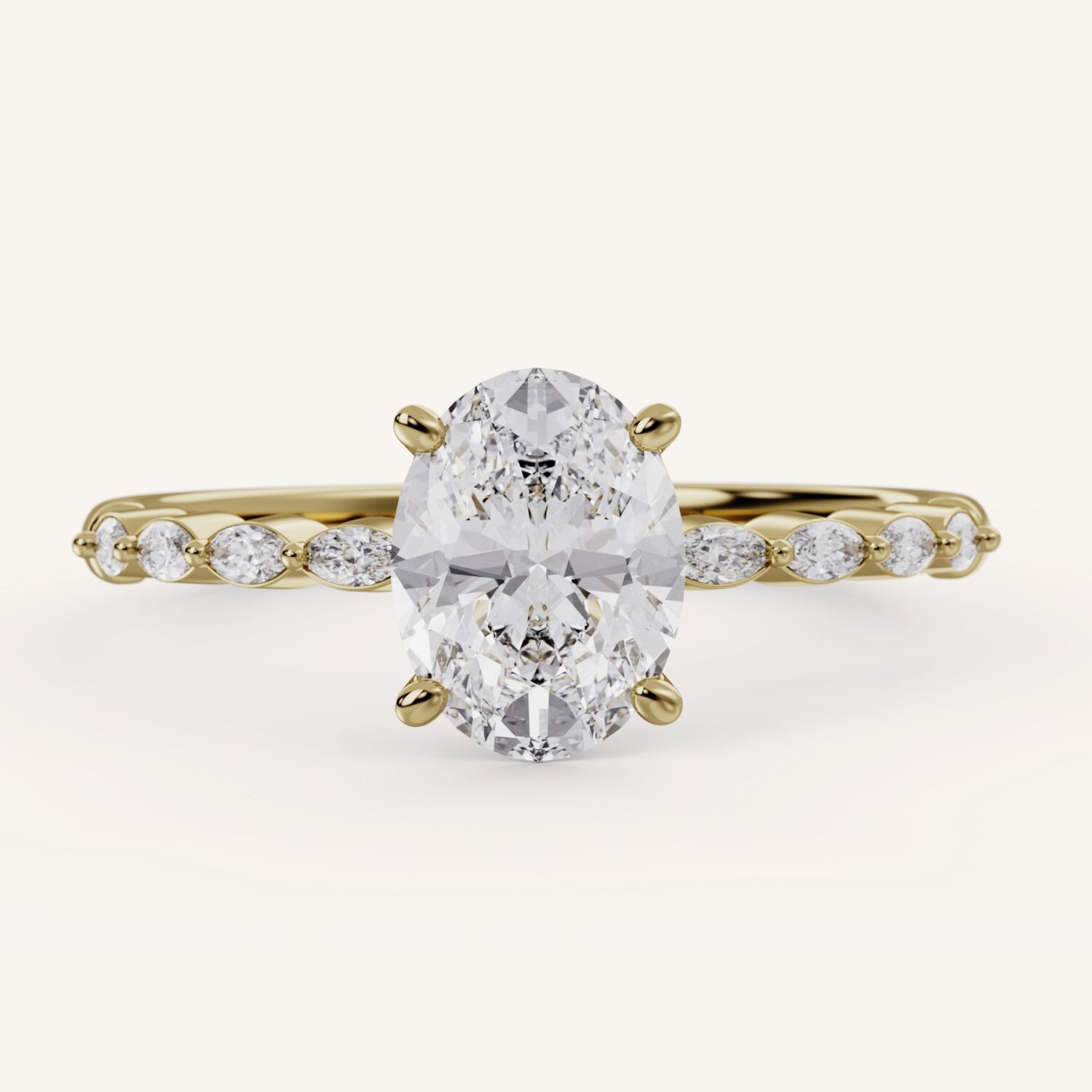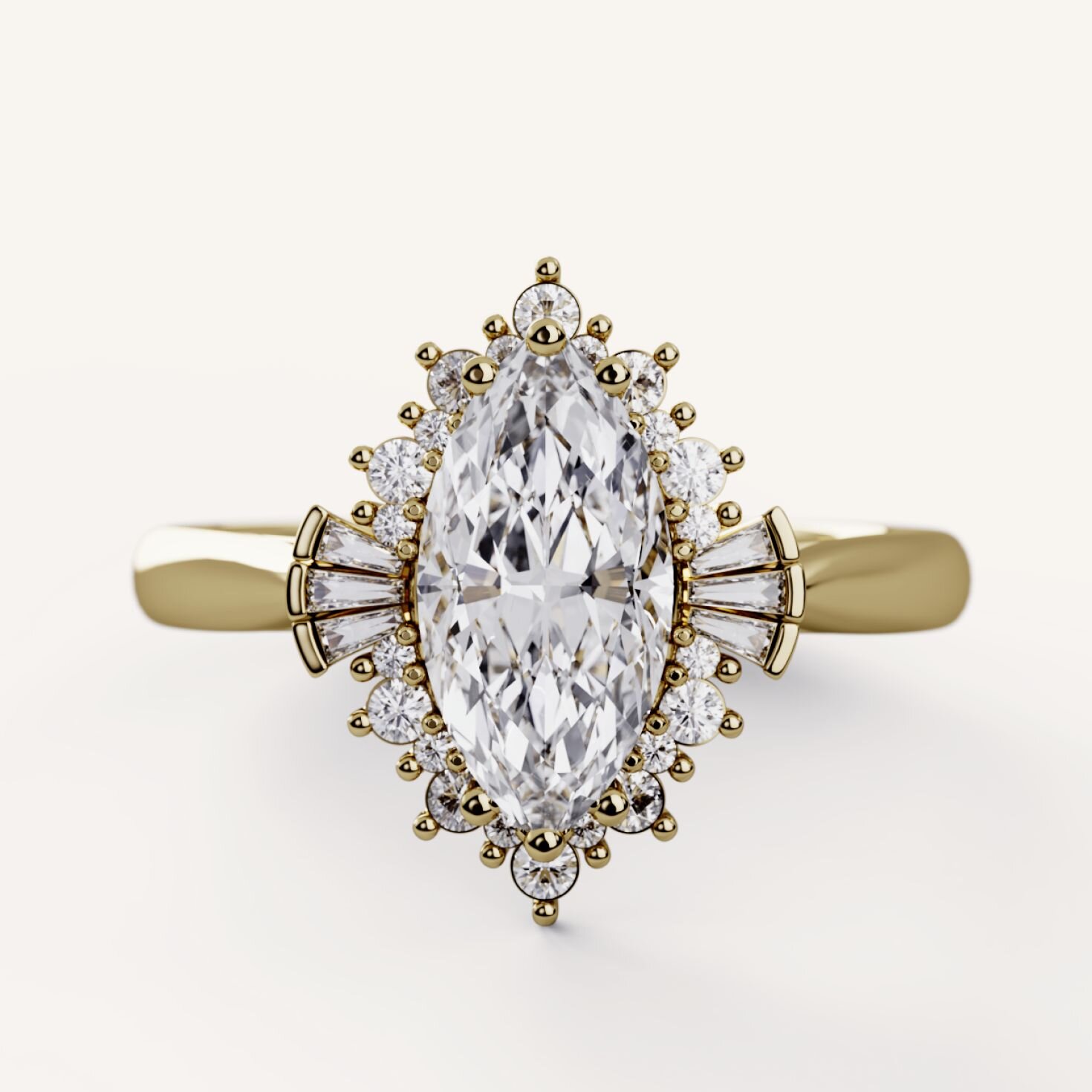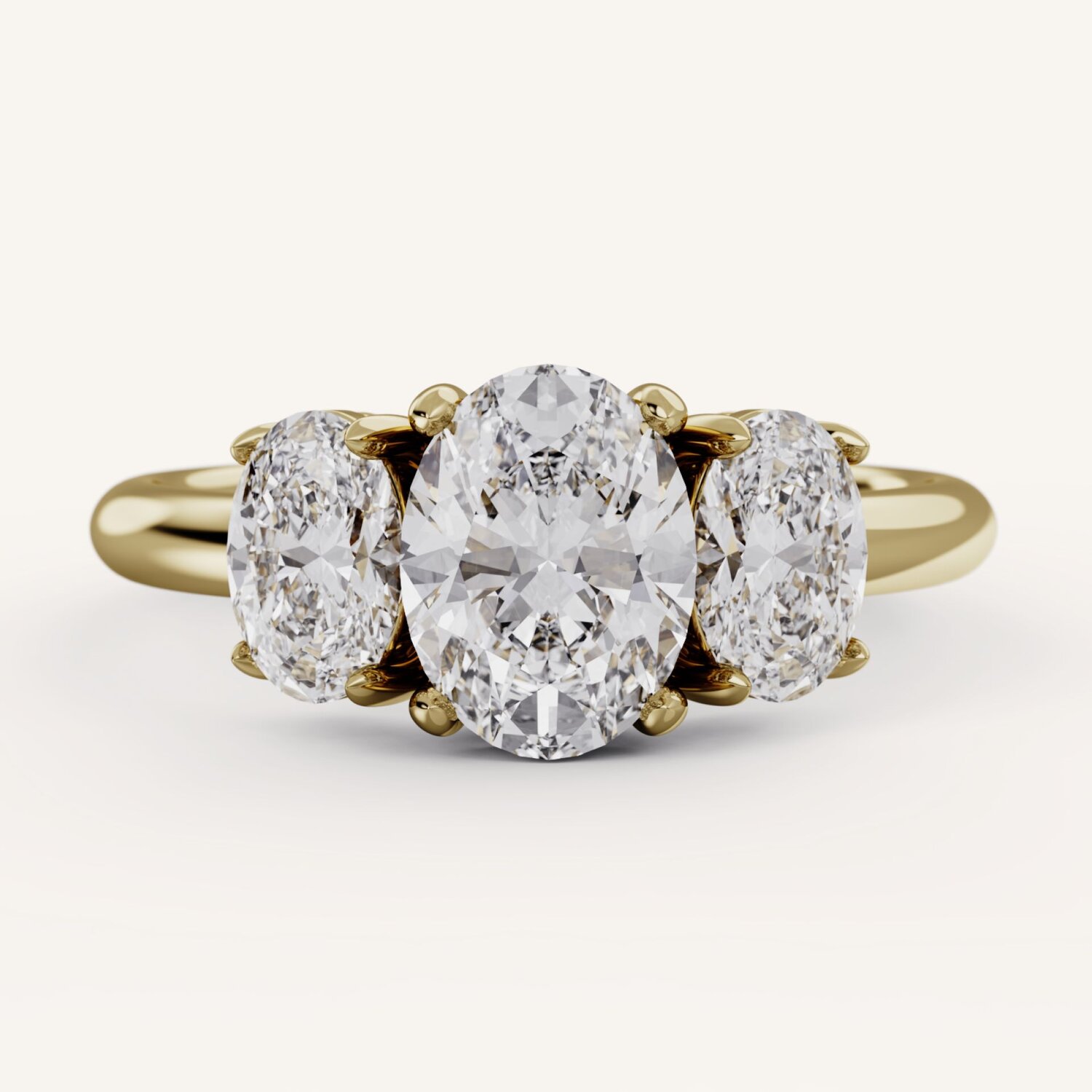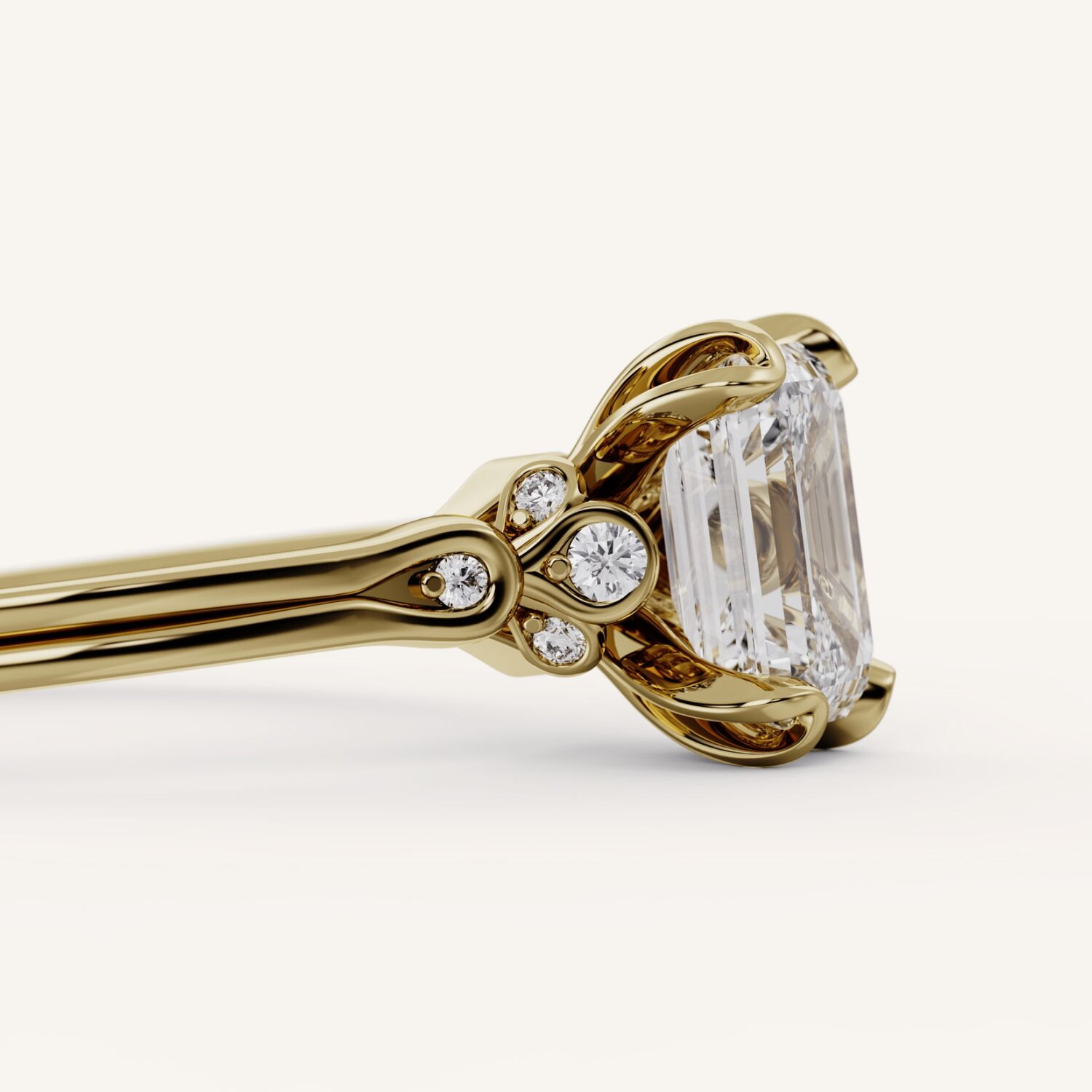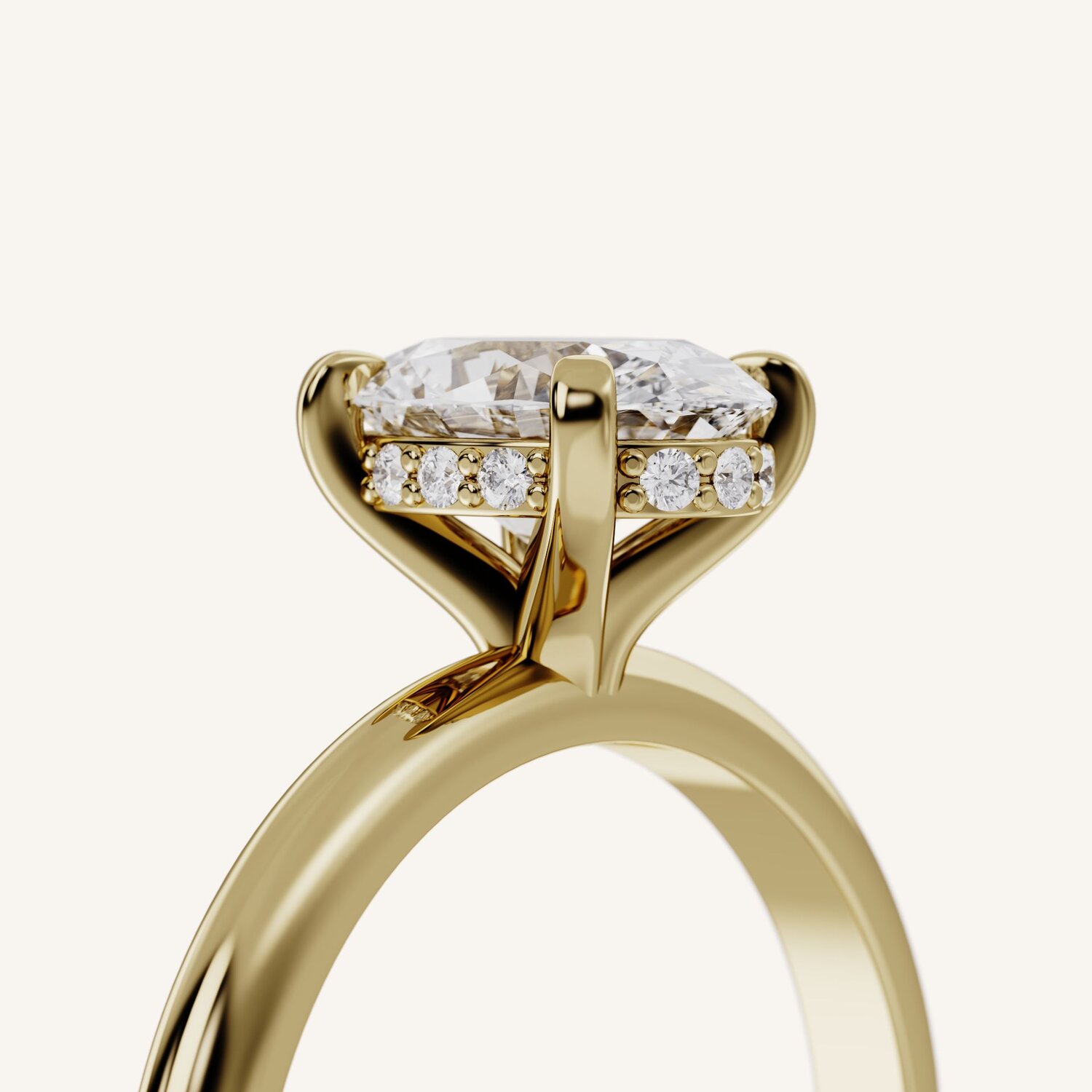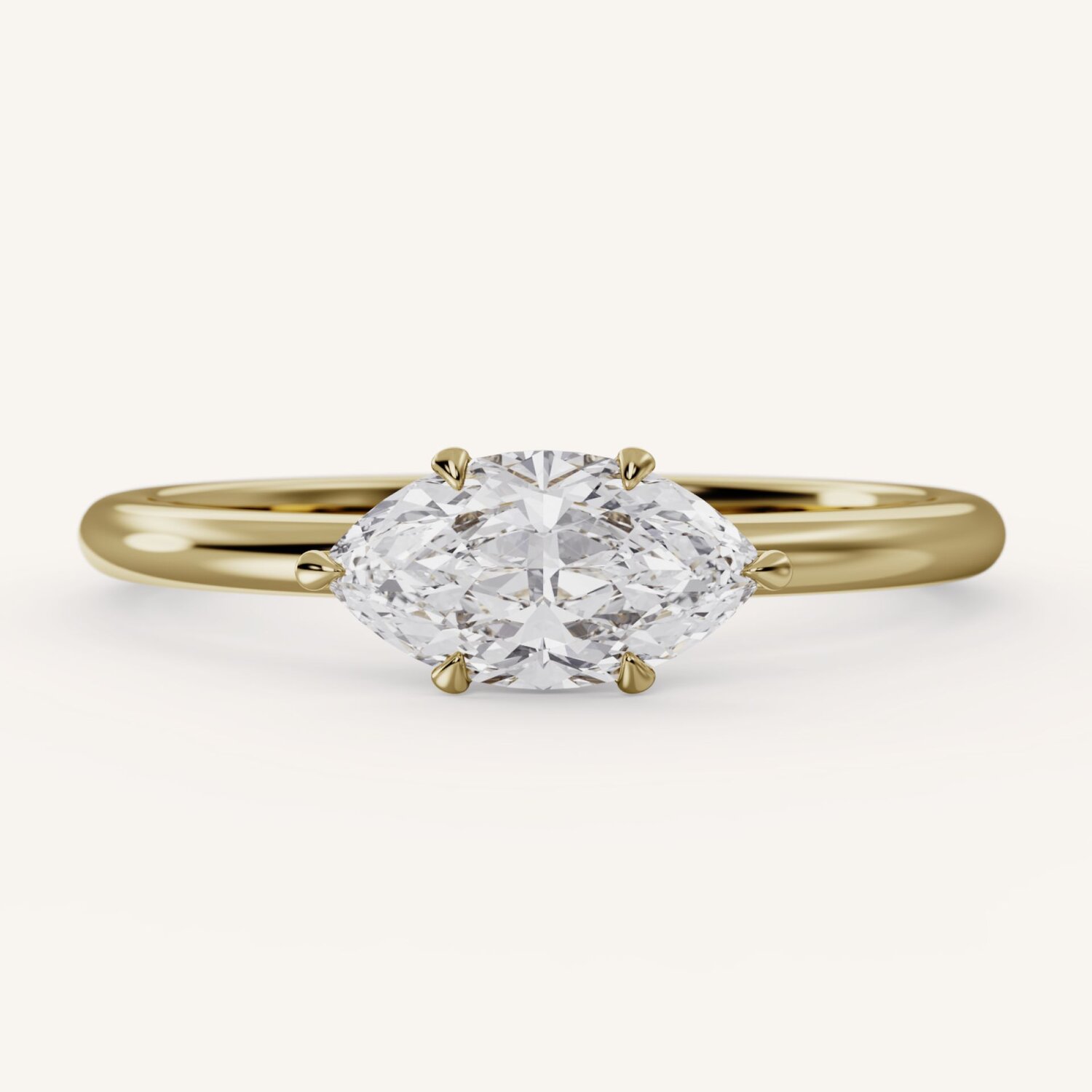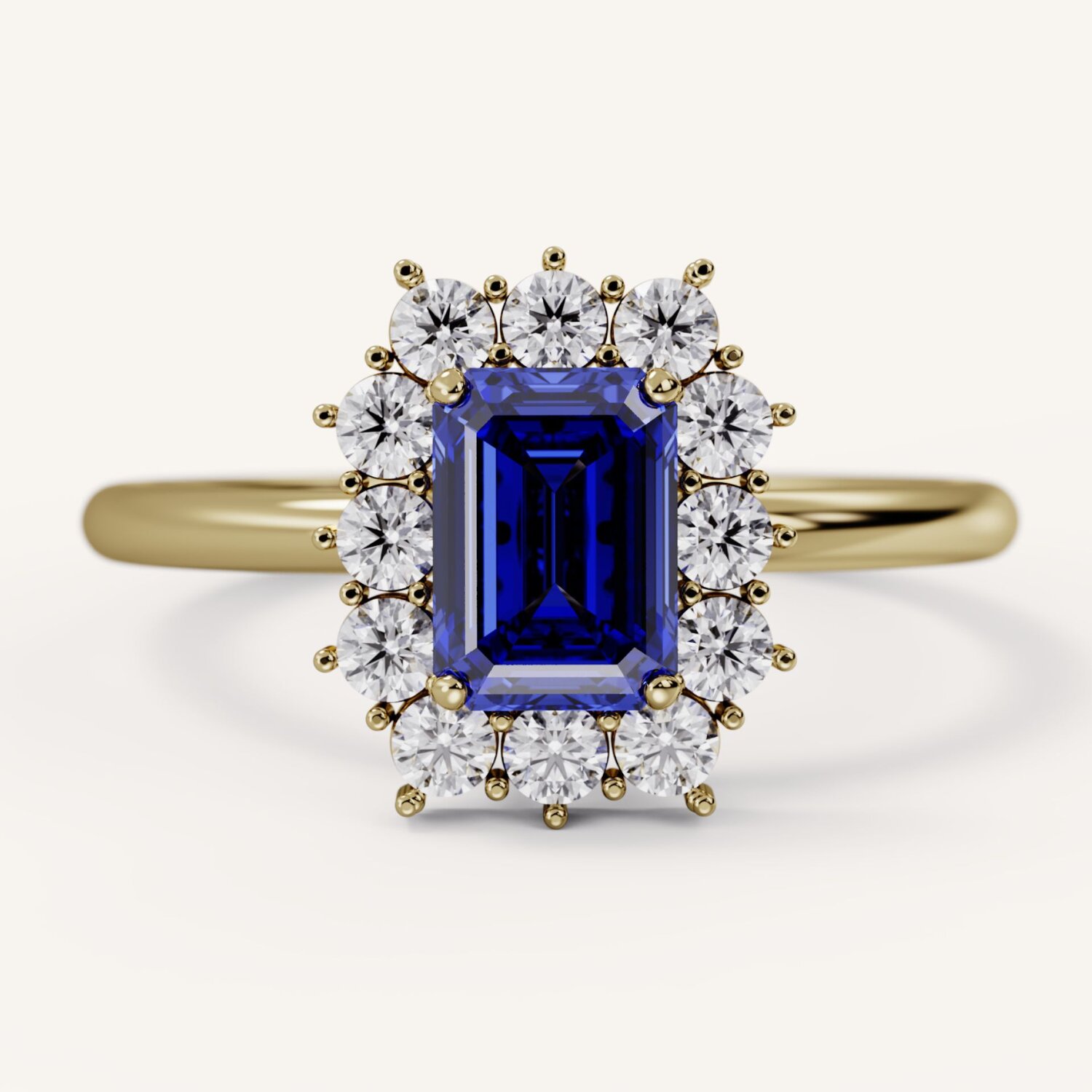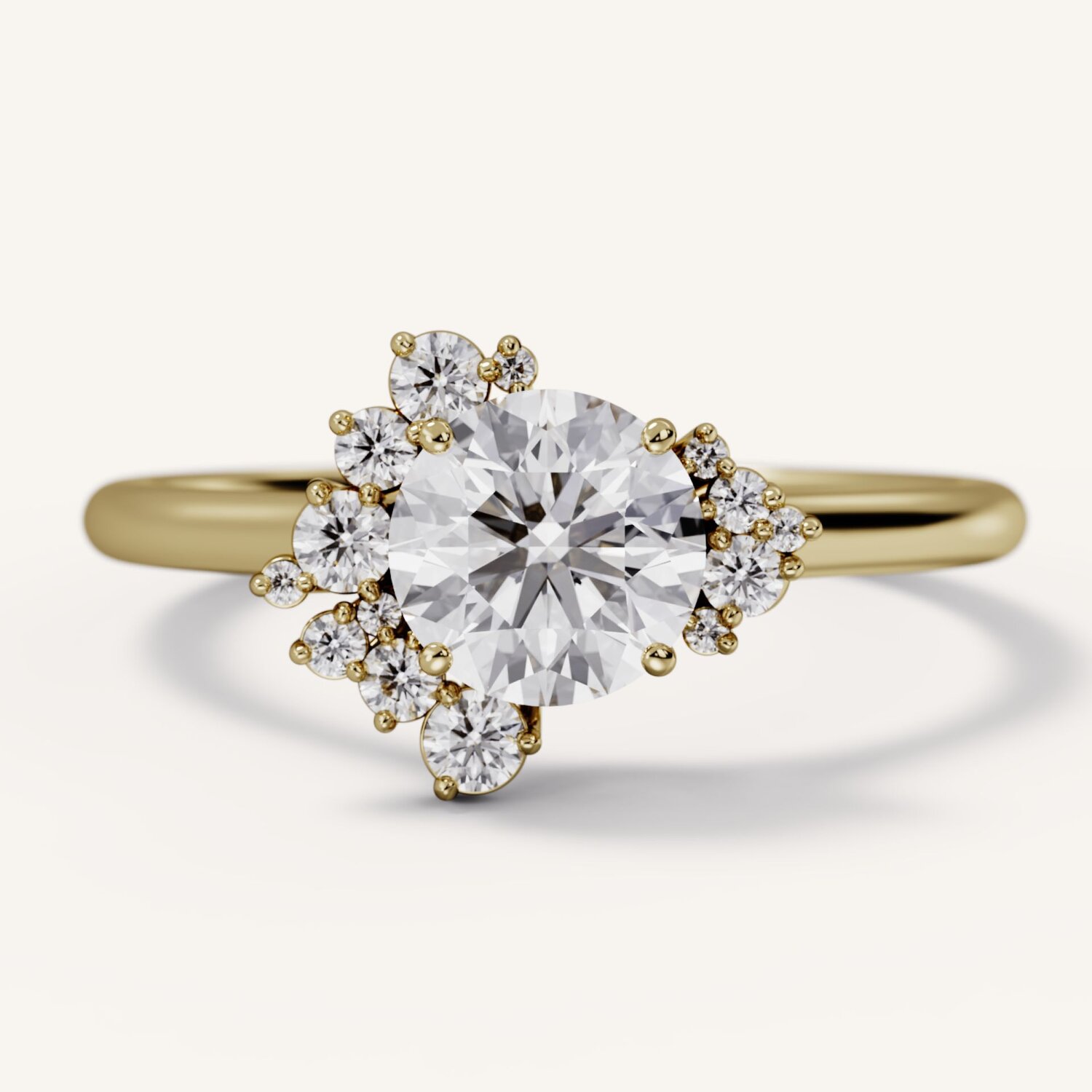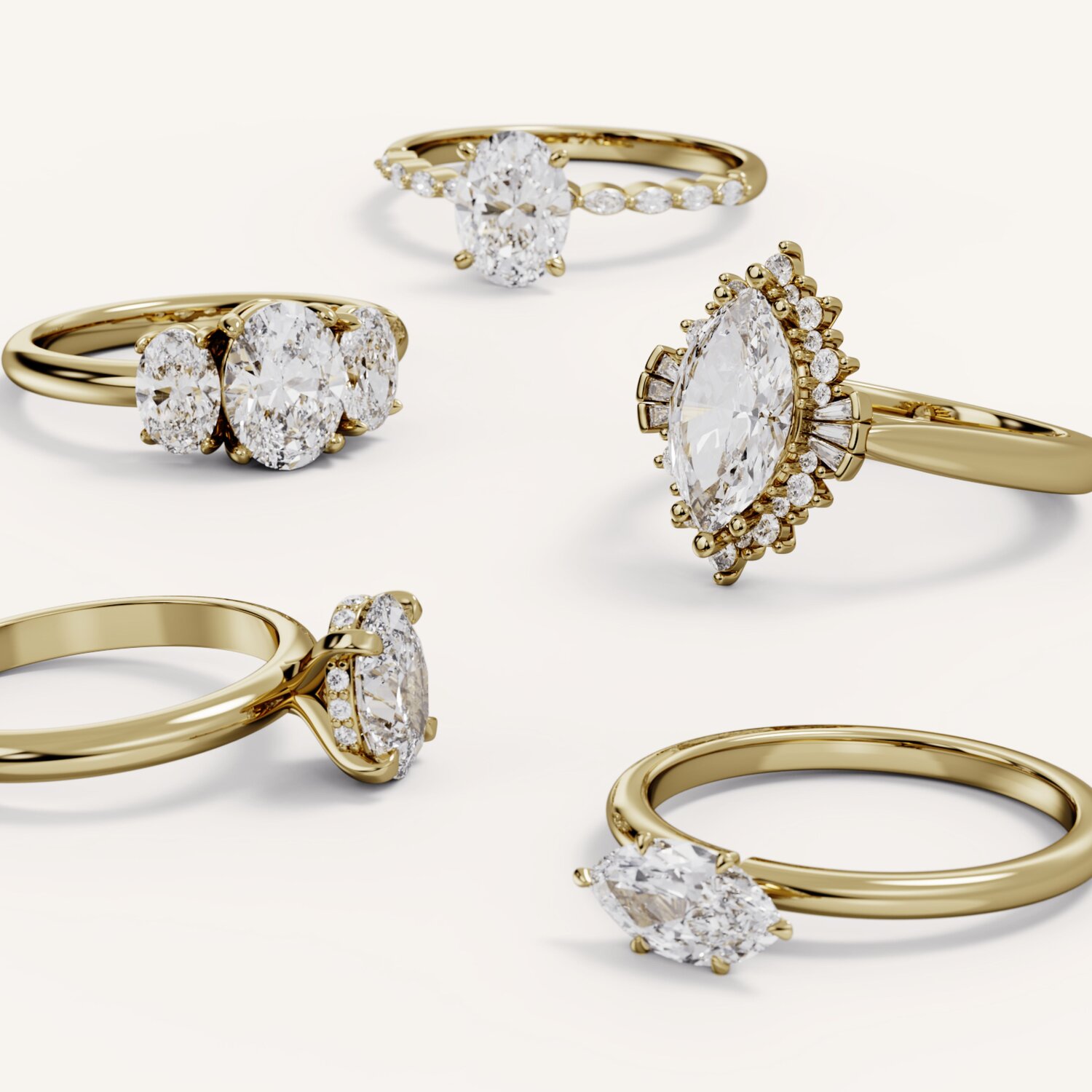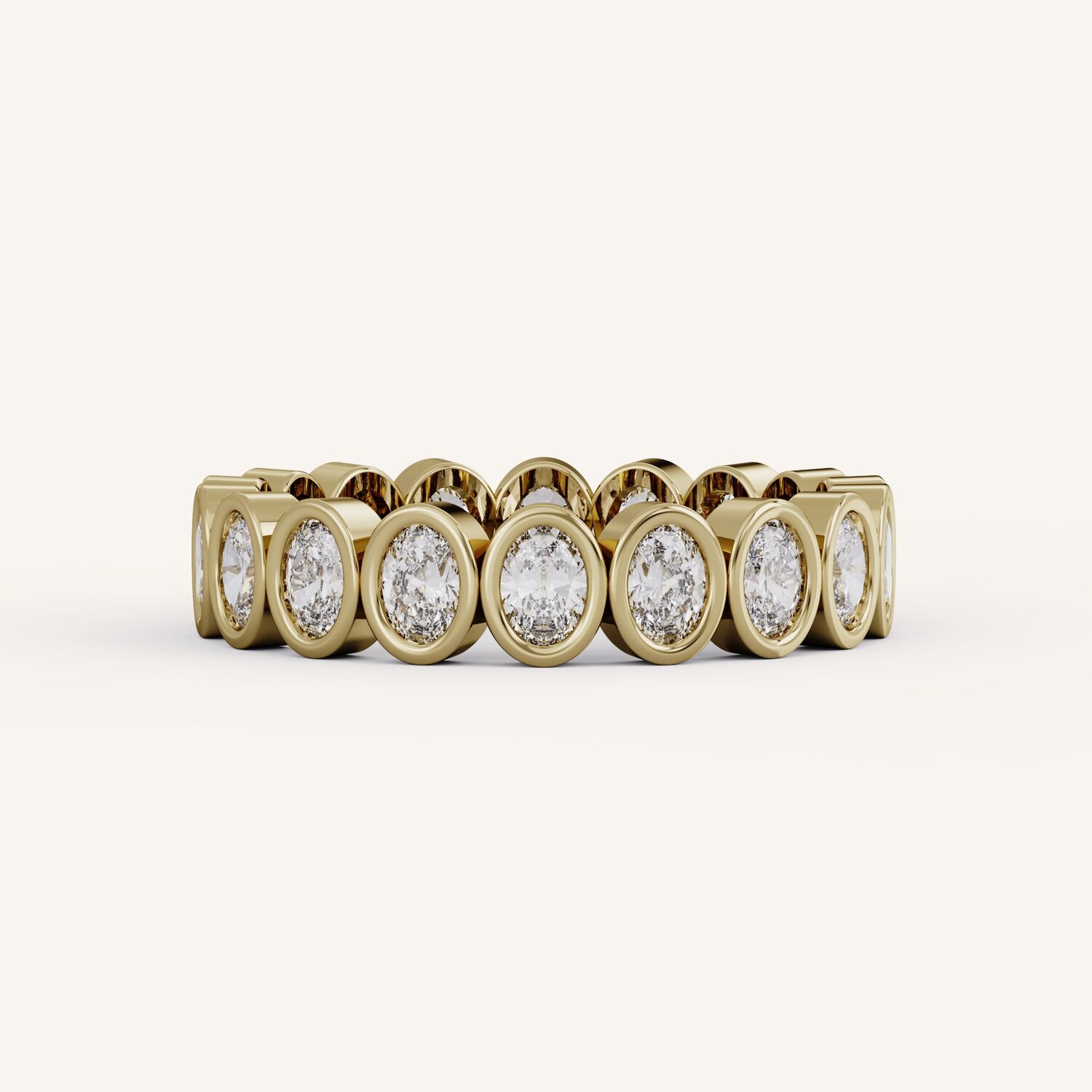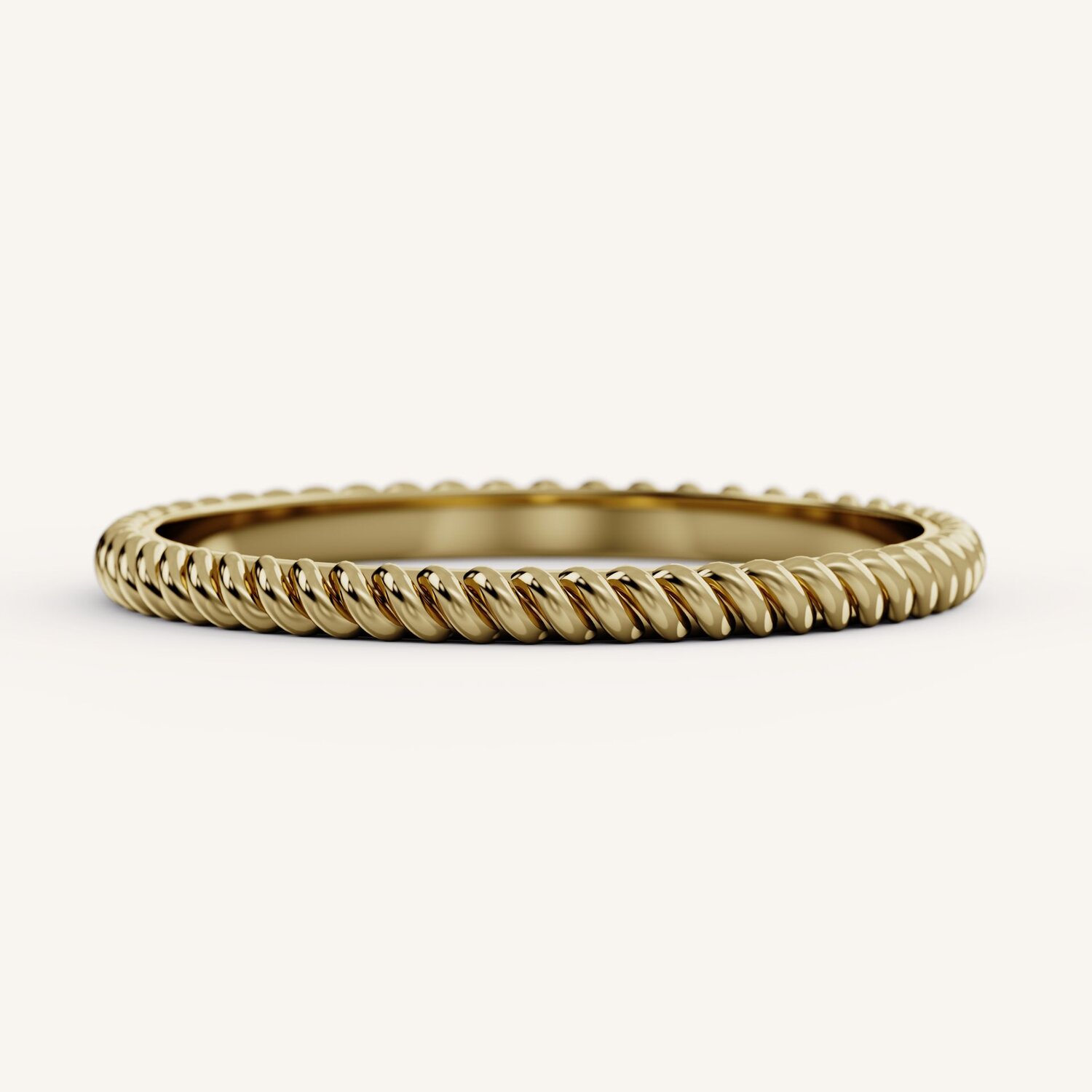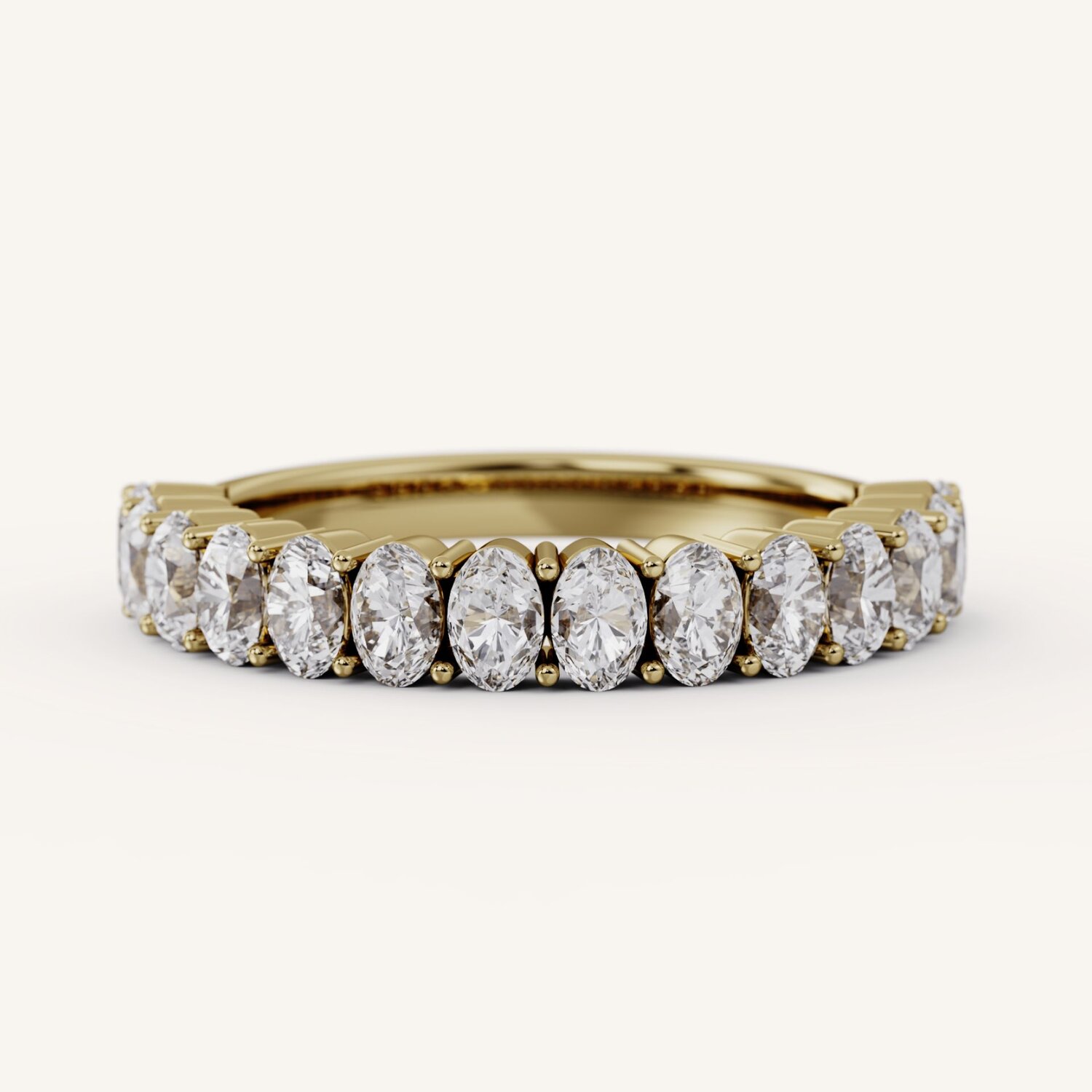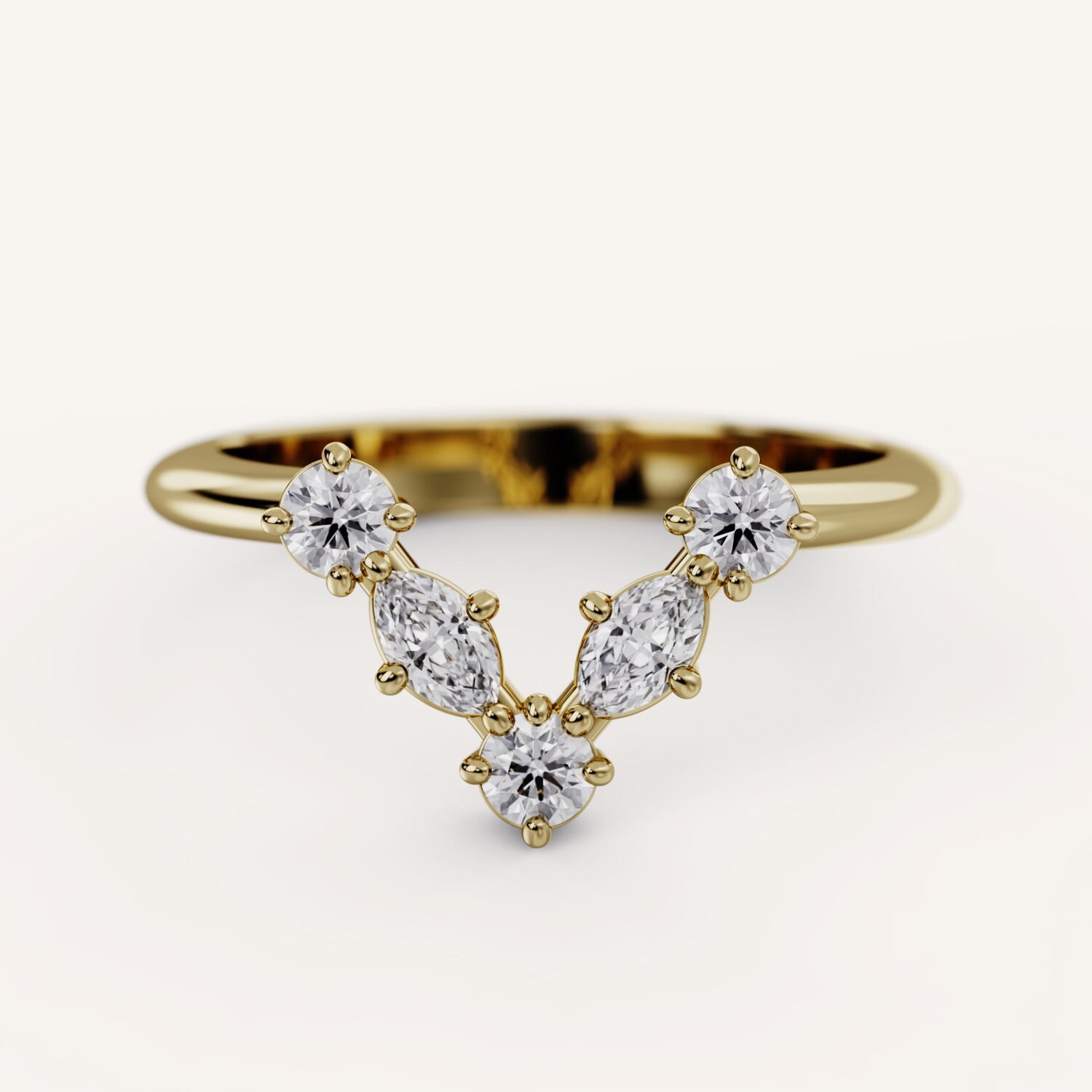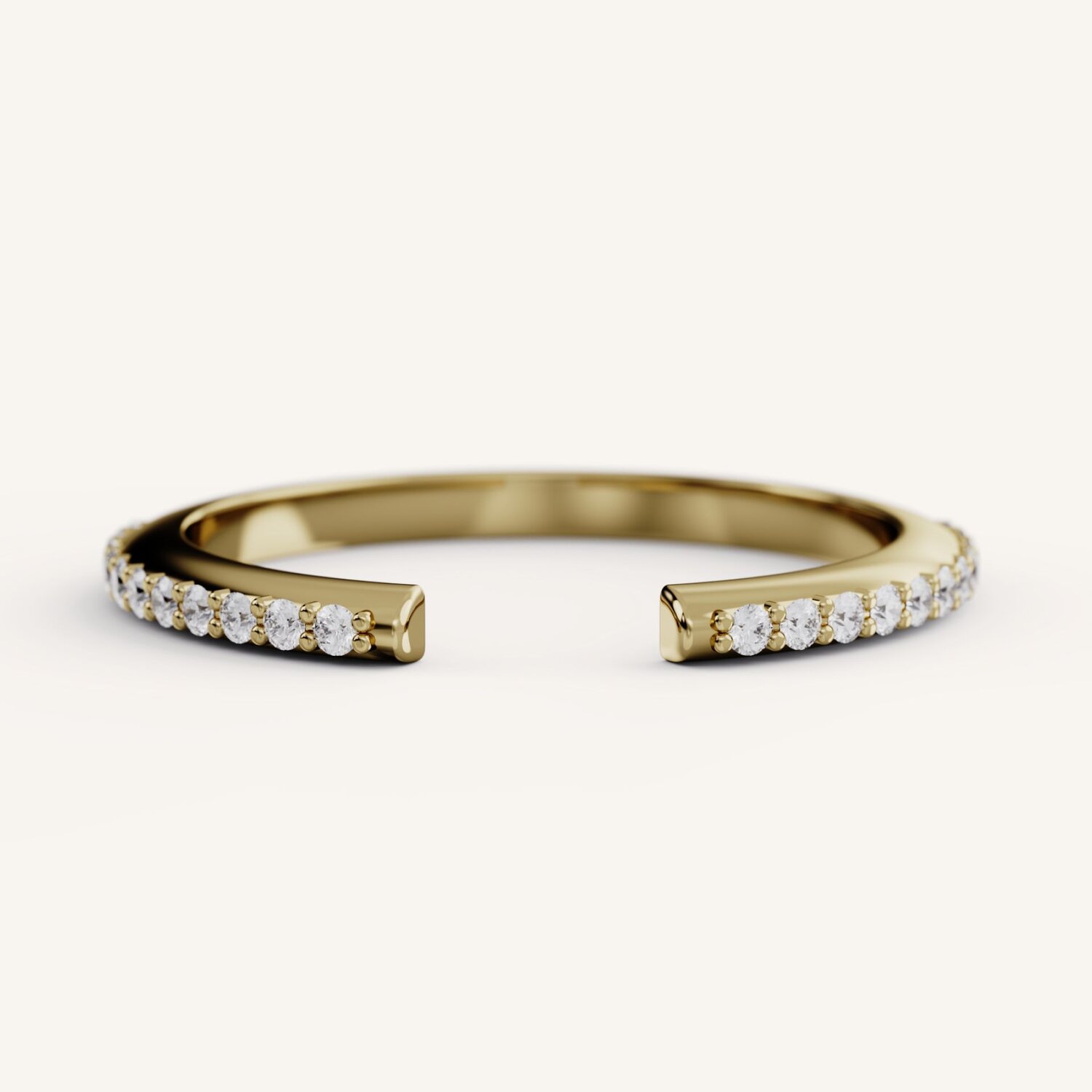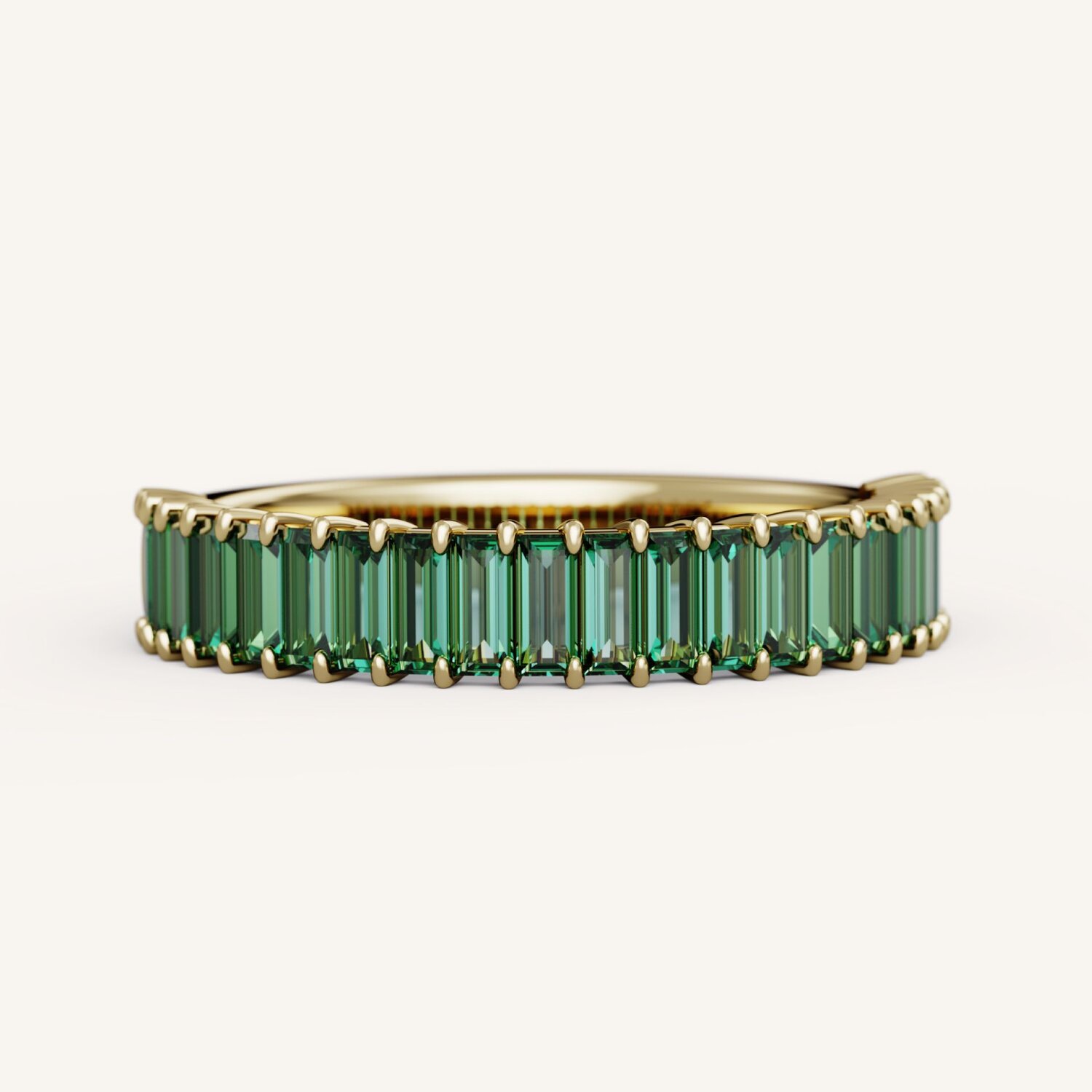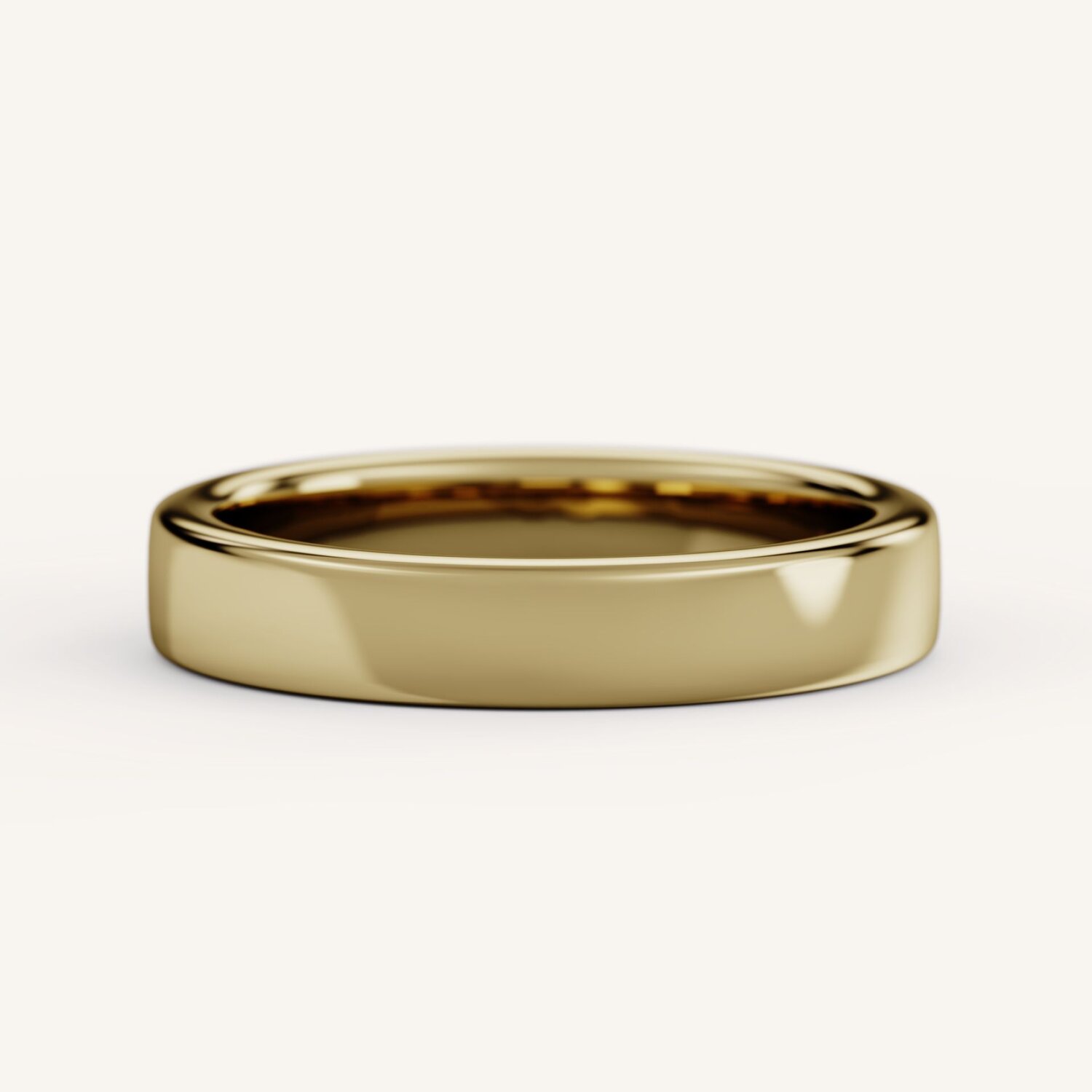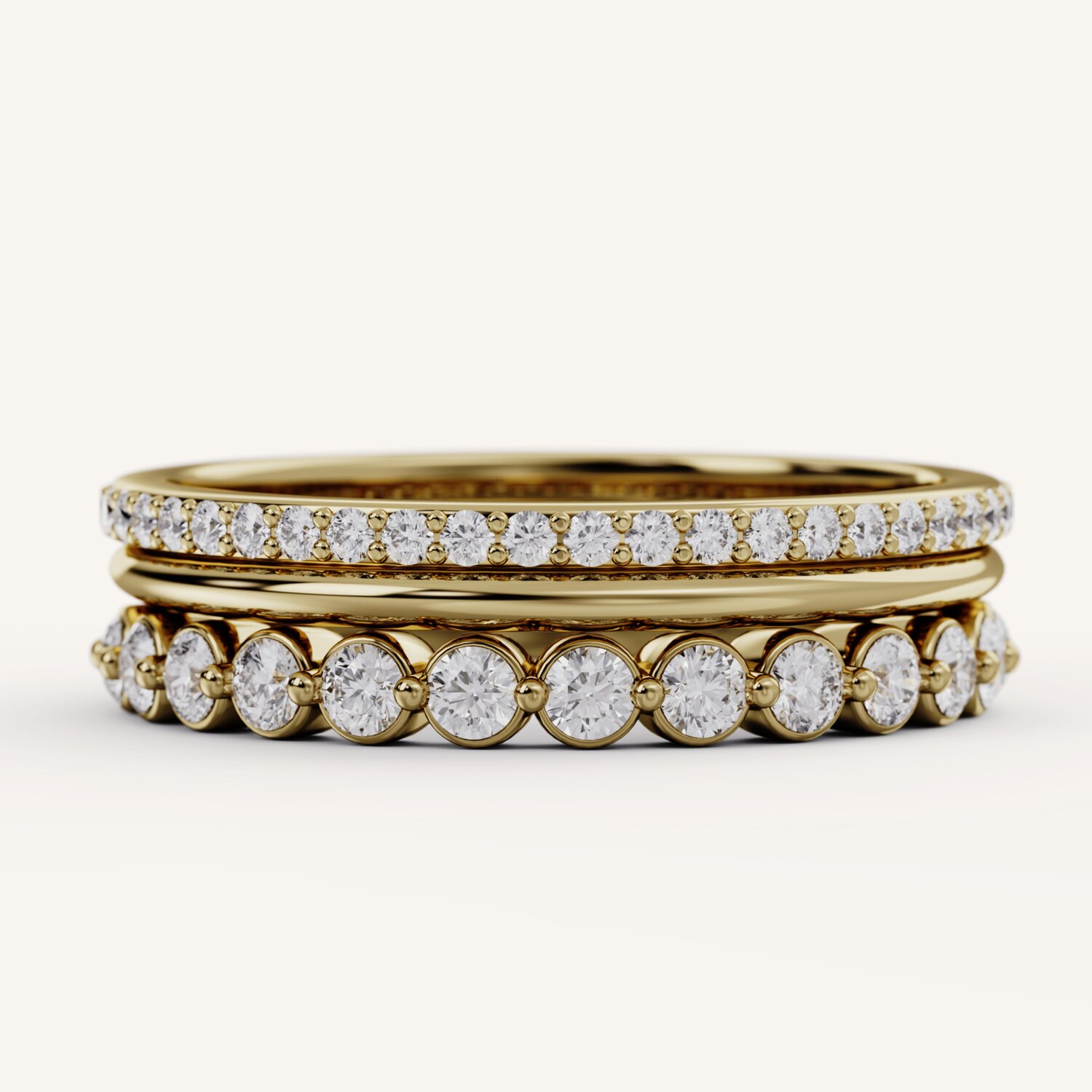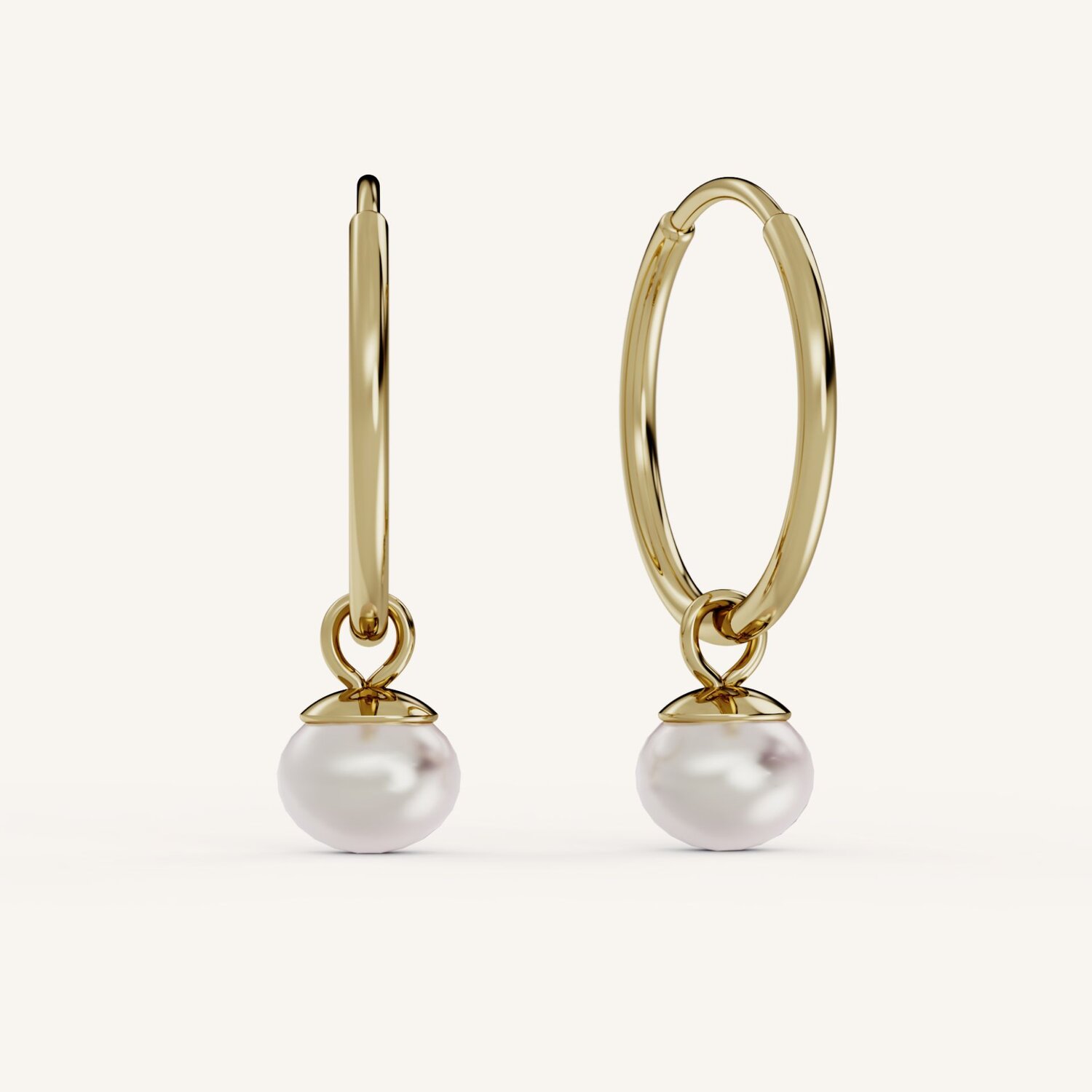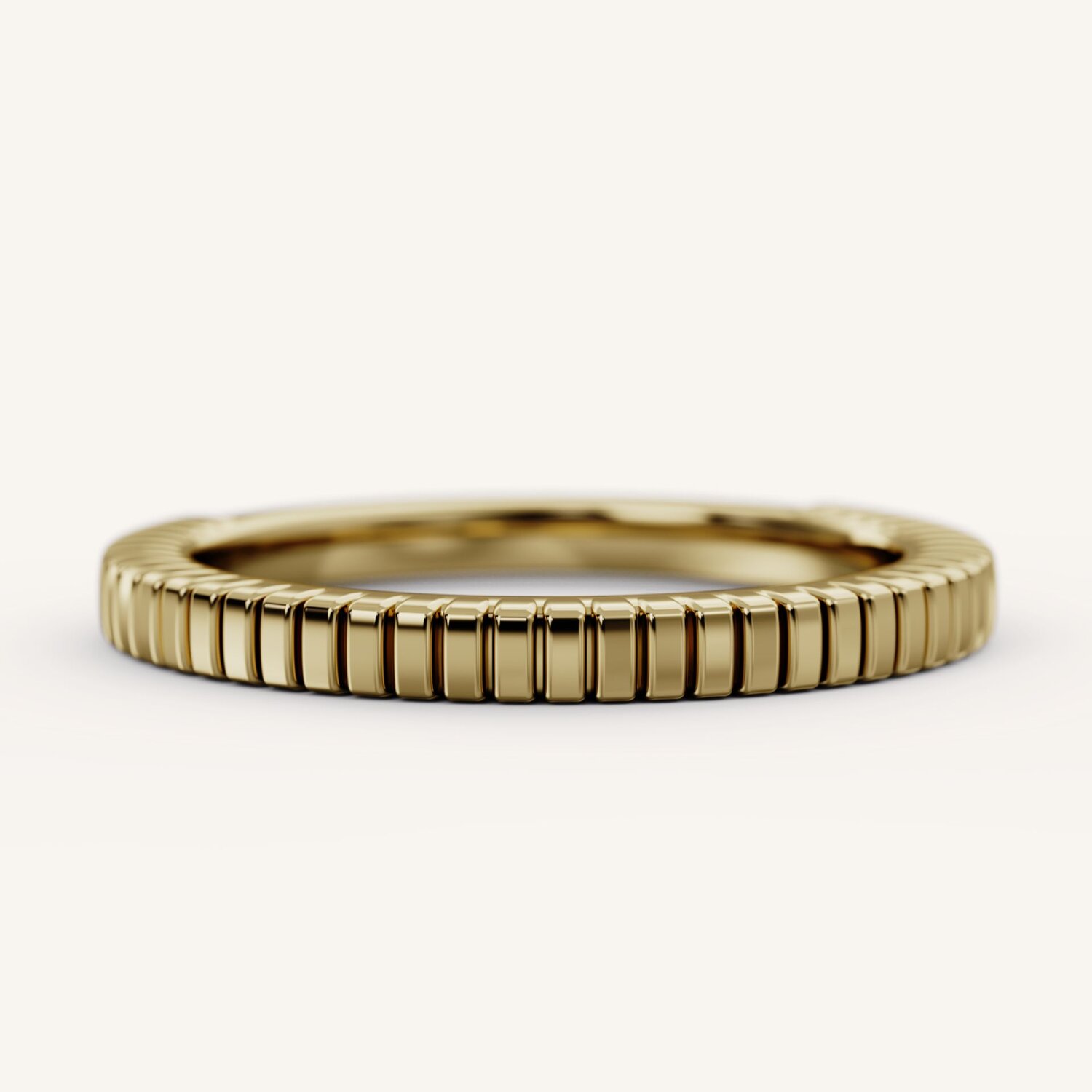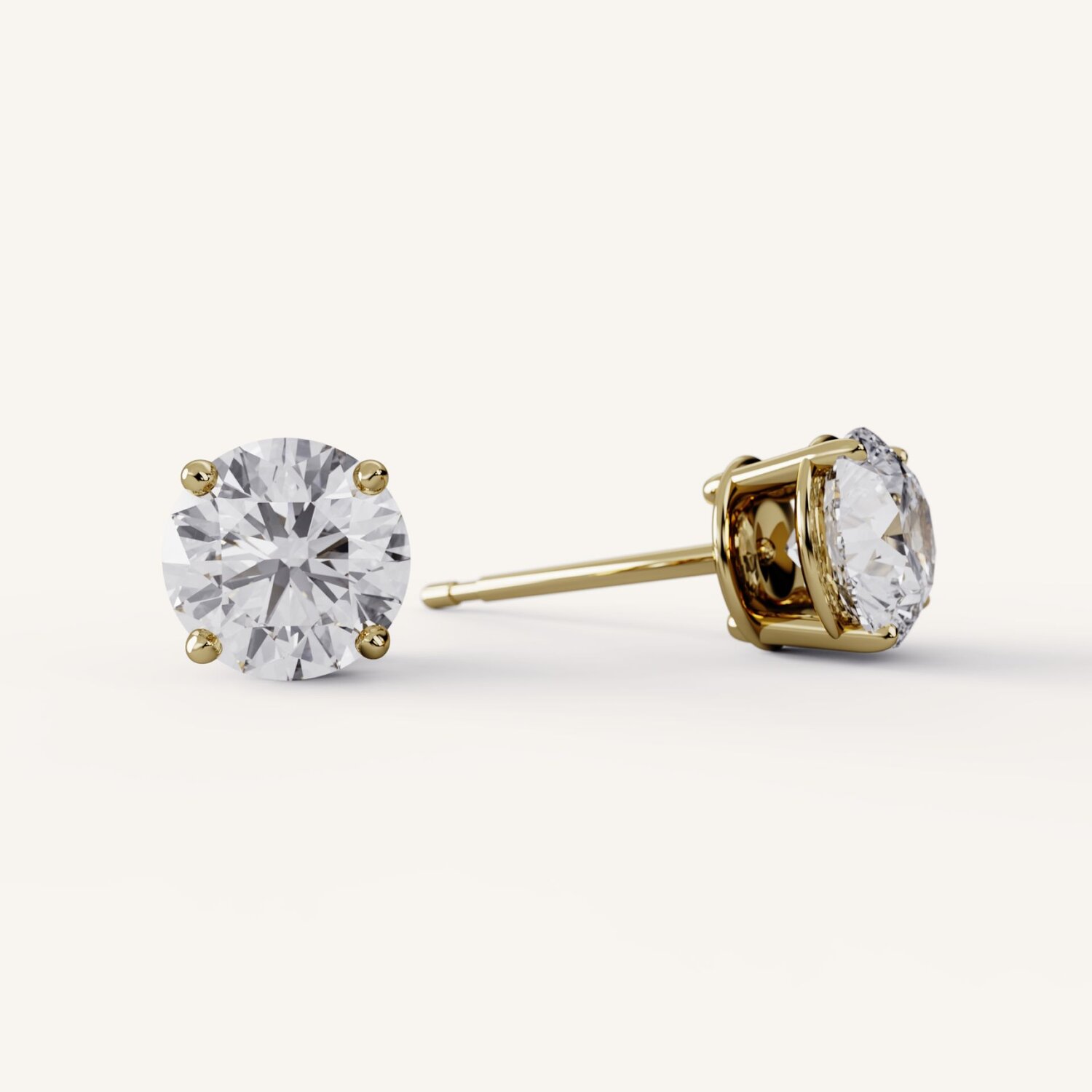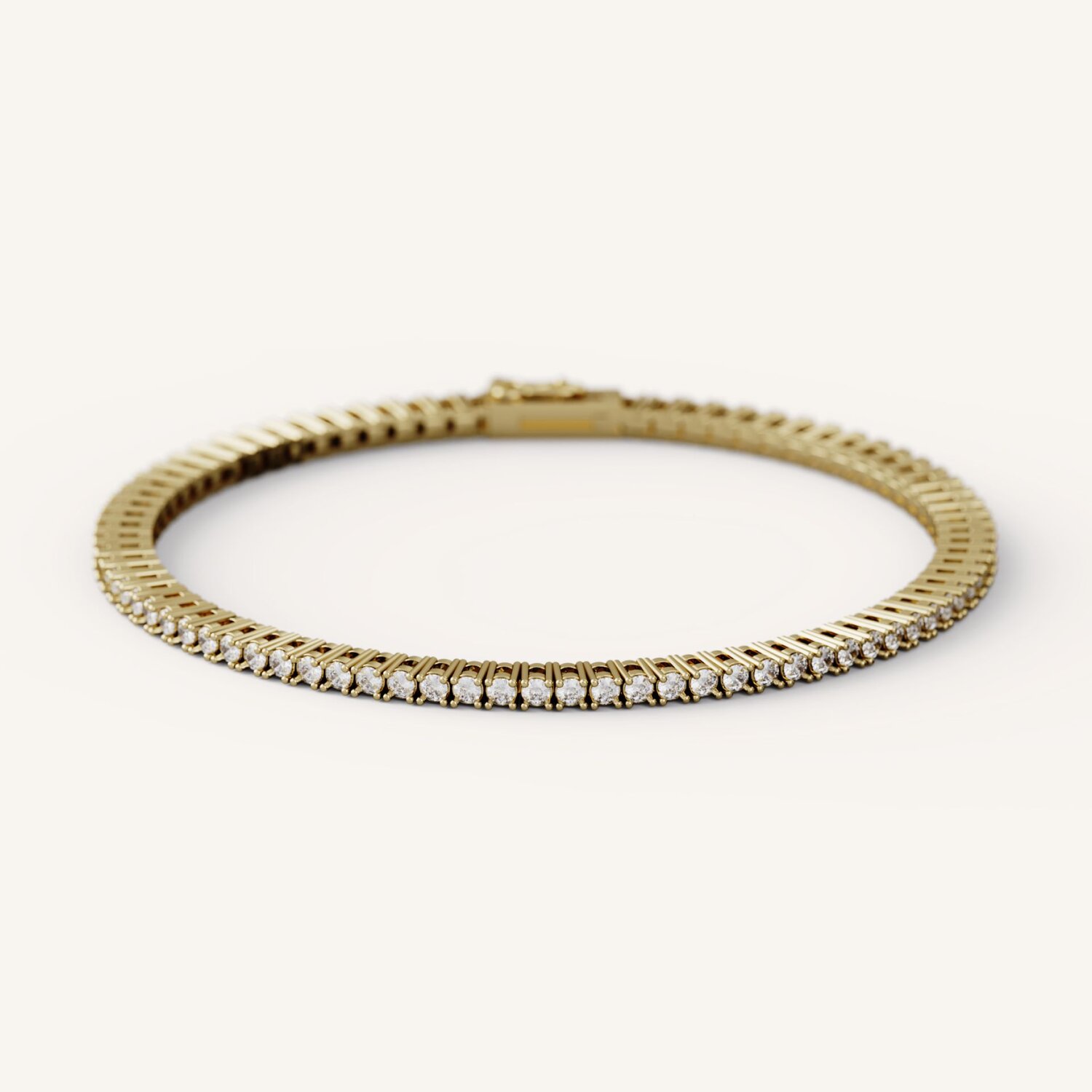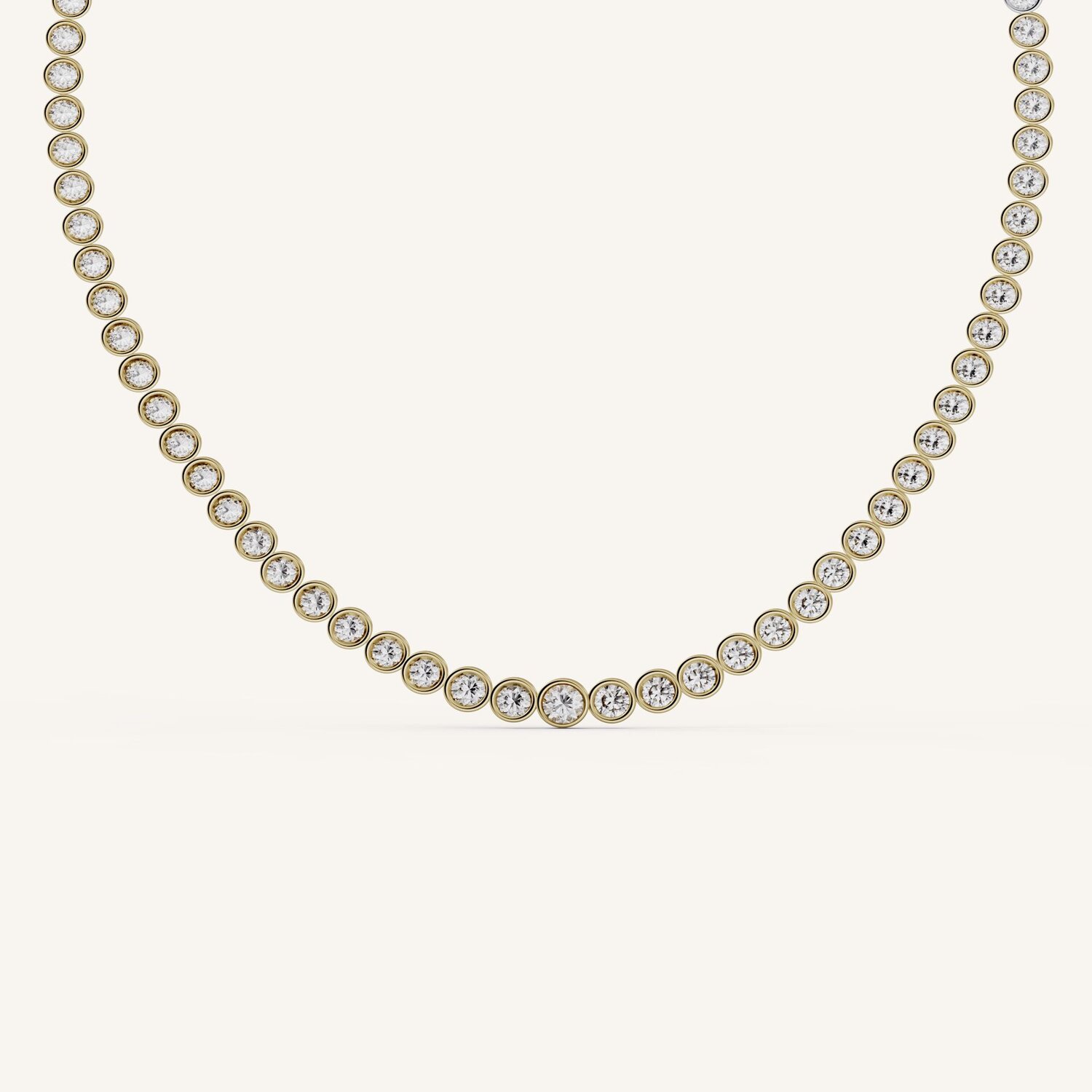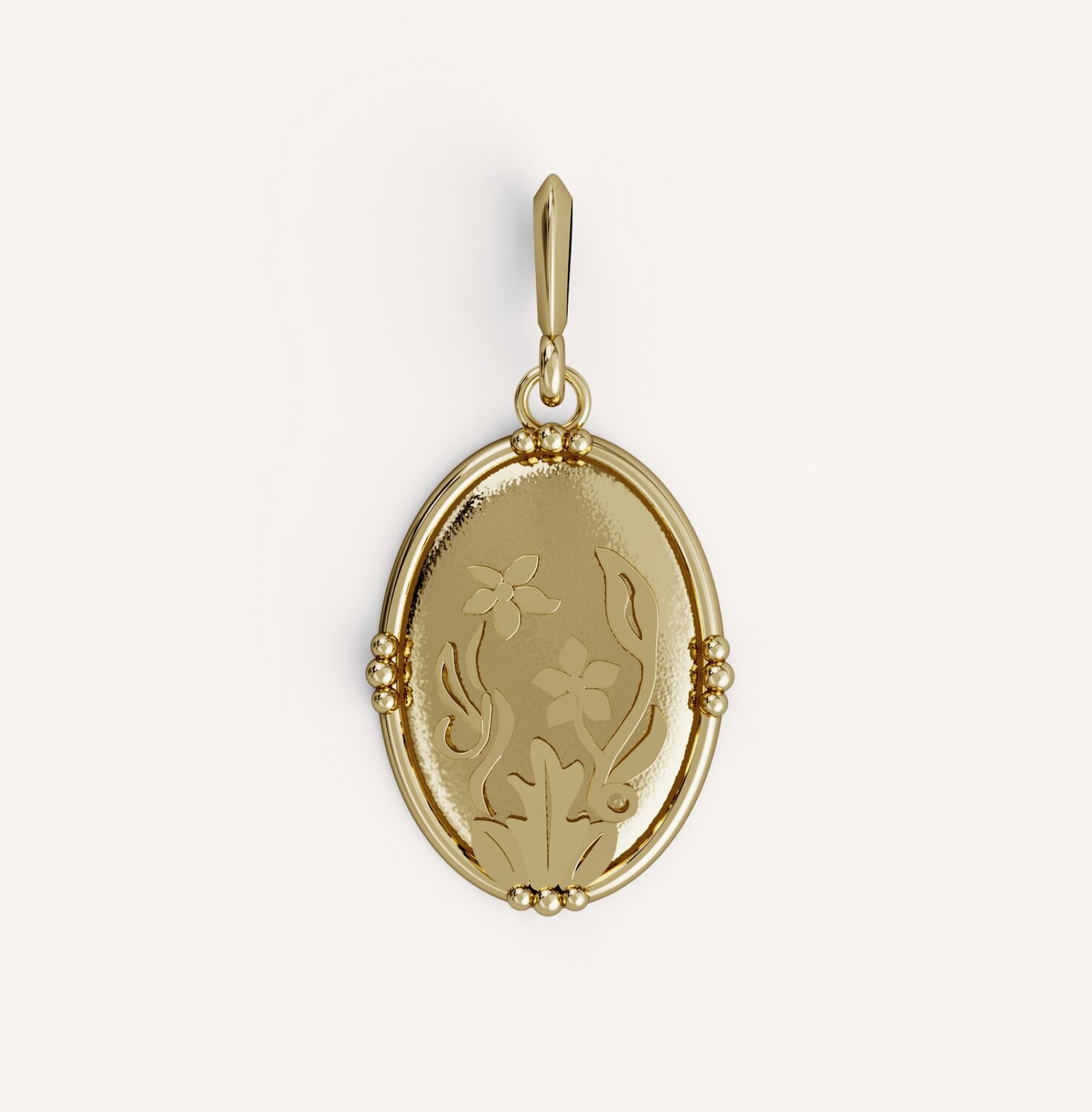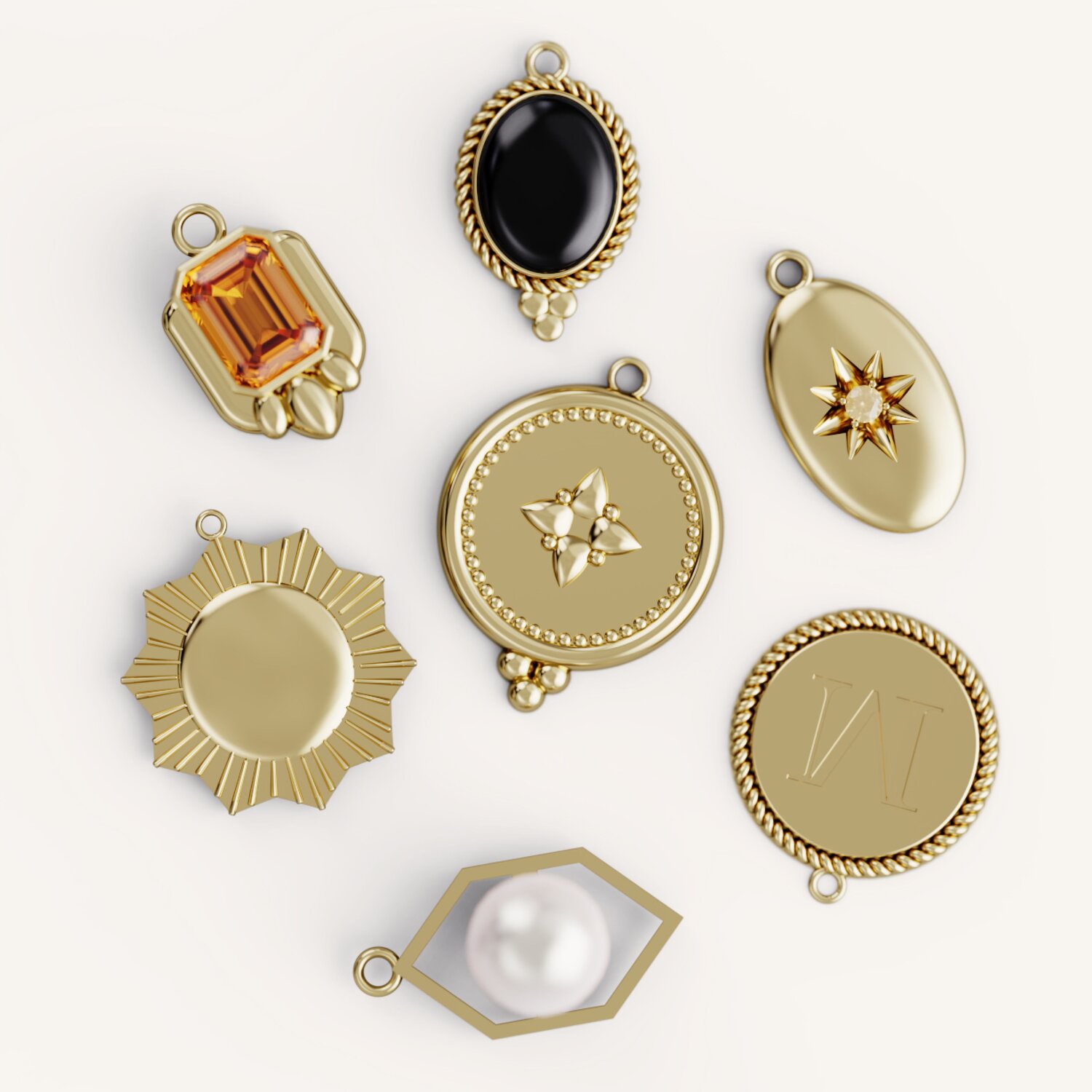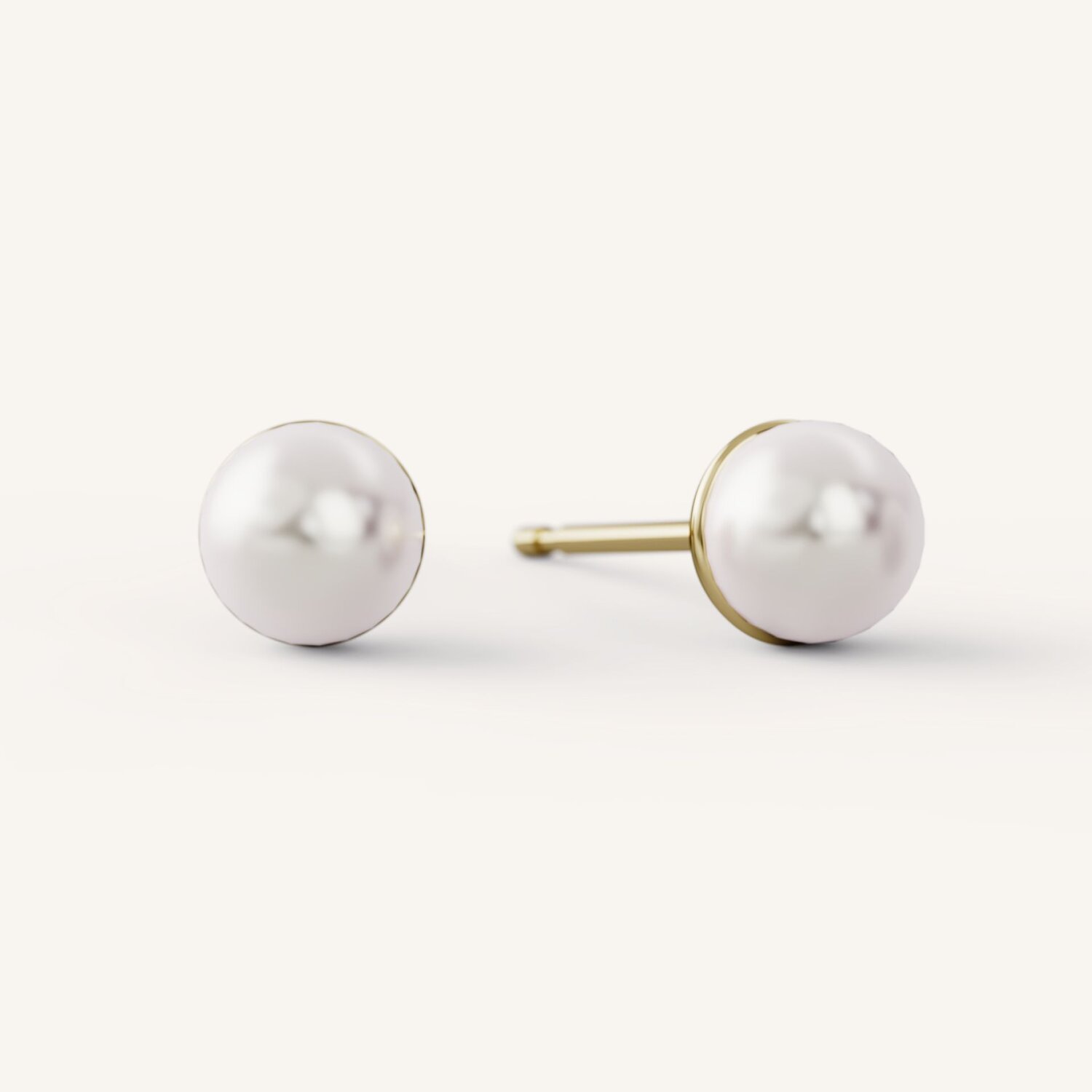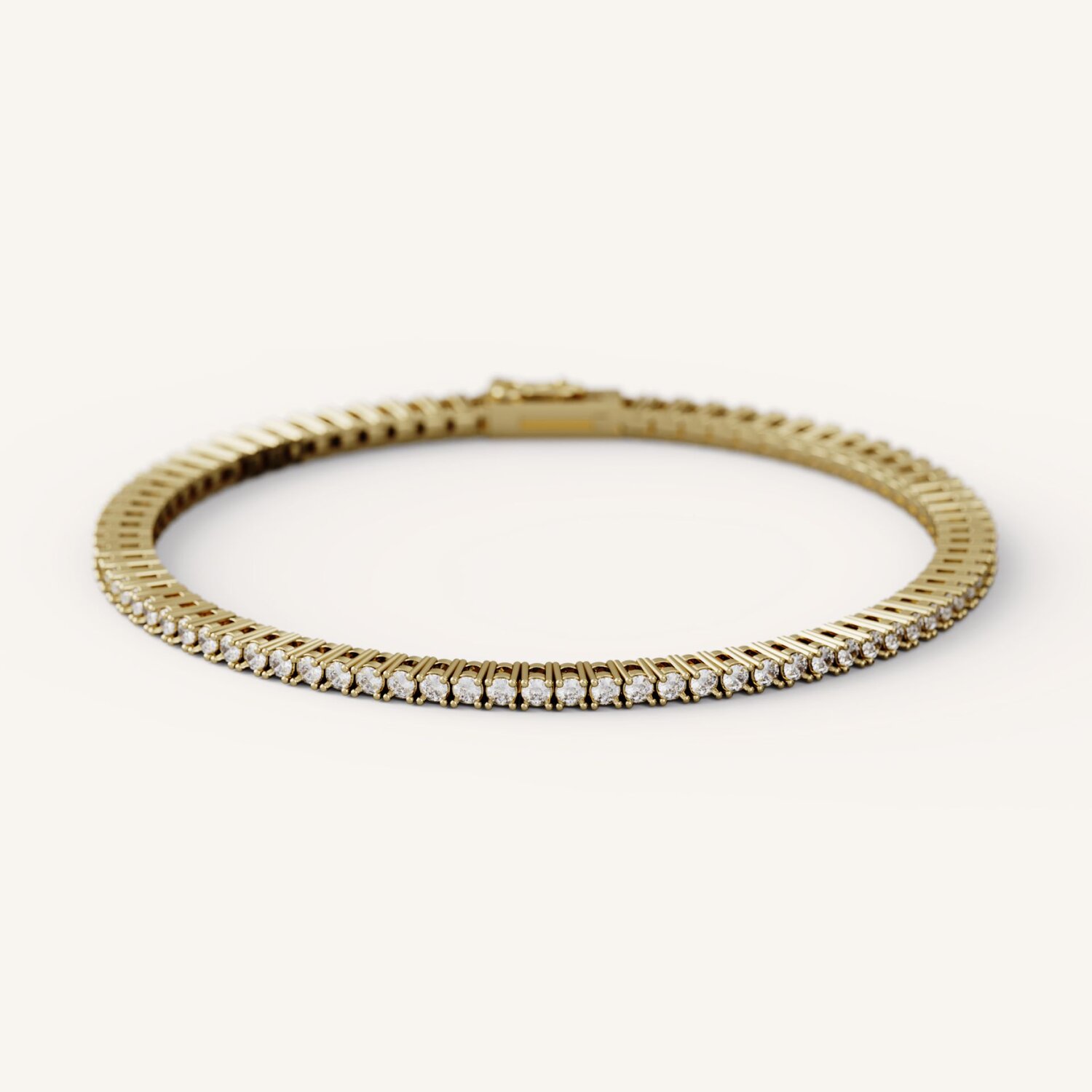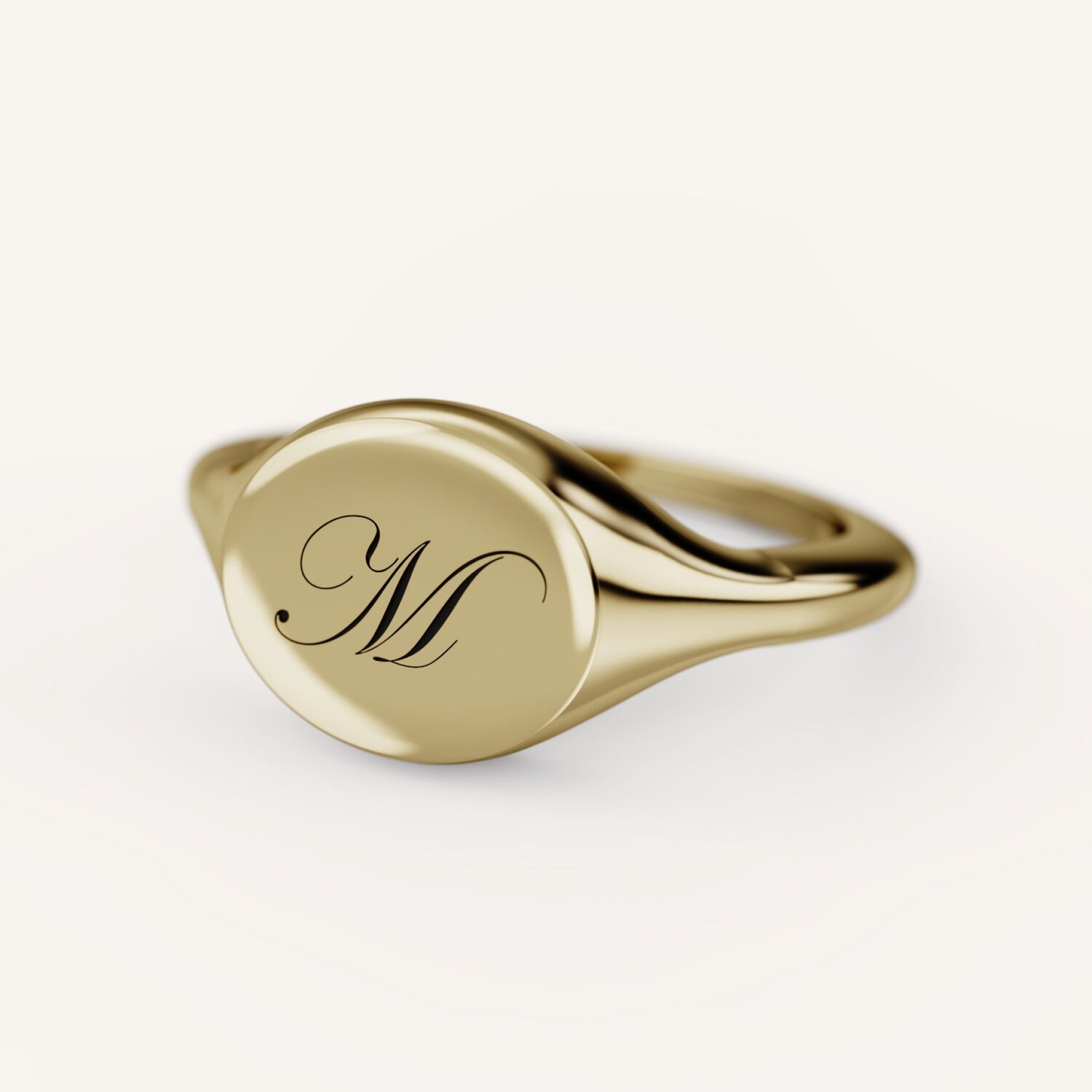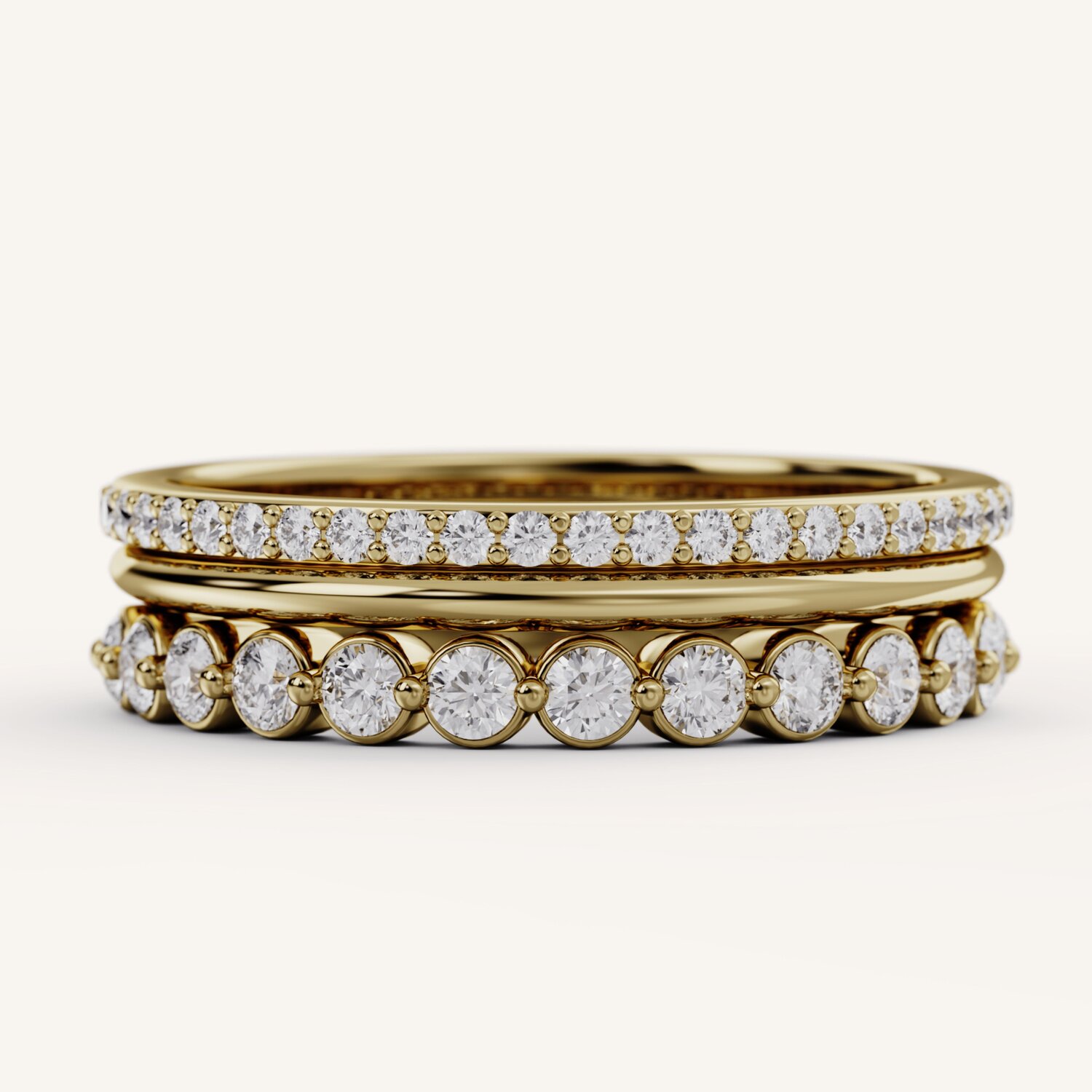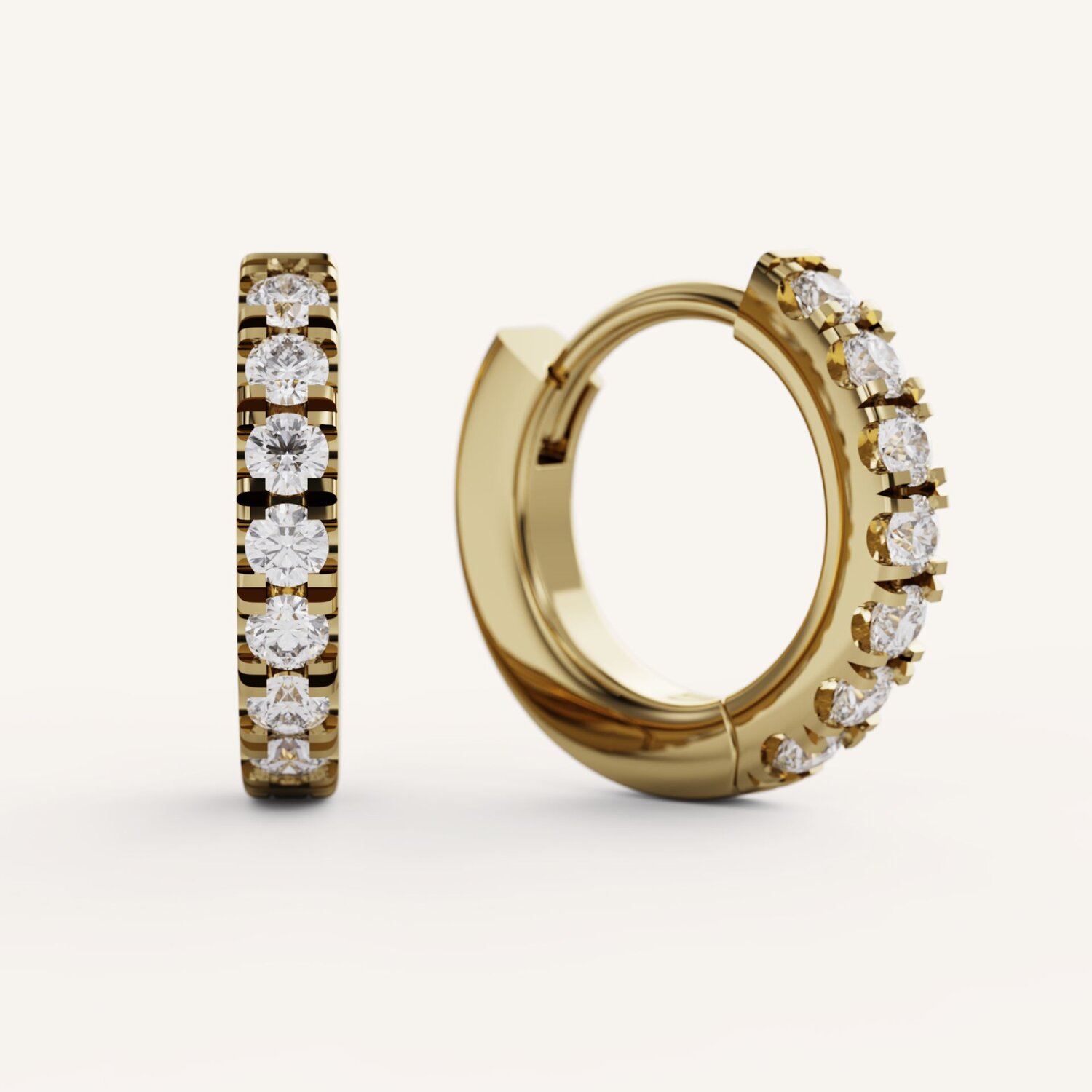Moissanite Engagement Rings: A Guide to Brilliance and Sustainability
Learn more about the beauty and brilliance of moissanite engagement rings, including the best cuts, settings, and where to find gorgeous moissanite.
The Fascinating History of Moissanite
Moissanite is a rare, naturally occurring mineral often referred to as the “gemstone of the stars.” In 1893, French scientist Dr. Henri Moissan discovered moissanite within a meteorite crater in Arizona. Initially, Dr. Moissan believed these hard, brilliant stones were diamonds. However, nine years later, he realized they were not composed of carbon, like diamonds, but rather of silicon carbide.
Natural moissanites are incredibly rare, with only a handful of deposits found throughout history. Most of the brilliant moissanites you see are grown in a lab. Moissanite, along with lab-grown diamonds, has a minimal carbon footprint and reduced environmental impact.
Modern moissanite gemstones are adored for their durability and radiant appearance. Not to mention, moissanite is often less expensive per carat than many other gemstones. This article will cover the unique properties of moissanite engagement rings and offer expert guidance on moissanite’s most beautiful cuts and settings.
The Science of Sparkle
Moissanite has unique optical properties that contribute to its exceptional shine and shimmer.
Refractive Index
Refractive Index (RI) is the amount of light that shines off a stone. It’s the most significant optical property affecting a gemstone’s brilliance or sparkle. The RI of moissanite is 2.69, meaning it displays slightly more brilliance than diamond (with an RI of 2.42) or any other popular gemstone.
Fire Dispersion
Also known as gemstone dispersion, fire refers to the prism effect of pure white light entering a gem, breaking into spectral colors, and reflecting back to the viewer. Moissanite’s dispersion is 0.104, which exceeds that of many gemstones, including rubies, sapphires, and emeralds. Moissanite creates flashes of rainbow lights that add a captivating sparkle to your engagement ring. The reason behind the radiance is fascinating and showcases the special benefits of moissanite stones.
Mohs Hardness Scale
With a hardness of 9.25-9.50, moissanite is harder than all other gemstones except diamonds, which are a 10 on the Mohs Hardness Scale. Most fine jewelry wearers won’t notice a difference between the hardness of diamonds and moissanite.
The Ethical Choice
In the late 1950s, scientists discovered how to create moissanite in a lab. The process of making one moissanite stone from silicon carbide crystals takes two to three months and produces minimal environmental waste. This makes moissanite a great option for fine jewelry with few ethical or environmental concerns.
Not all mined diamonds come from troubling beginnings, but unfortunately, some traditional diamonds are not farmed ethically. At Olive Ave Jewelry, we’re committed to providing ethically sourced materials. All Olive Ave stones, including natural diamonds, are guaranteed to be ethical and environmentally friendly.
Still, the minimal environmental impact and the per-carat value of moissanite attract many newly engaged shoppers. All Olive Ave moissanite center stones come with a Limited Lifetime Warranty that applies to purchases 4mm in size or larger and confirms our commitment to excellence.
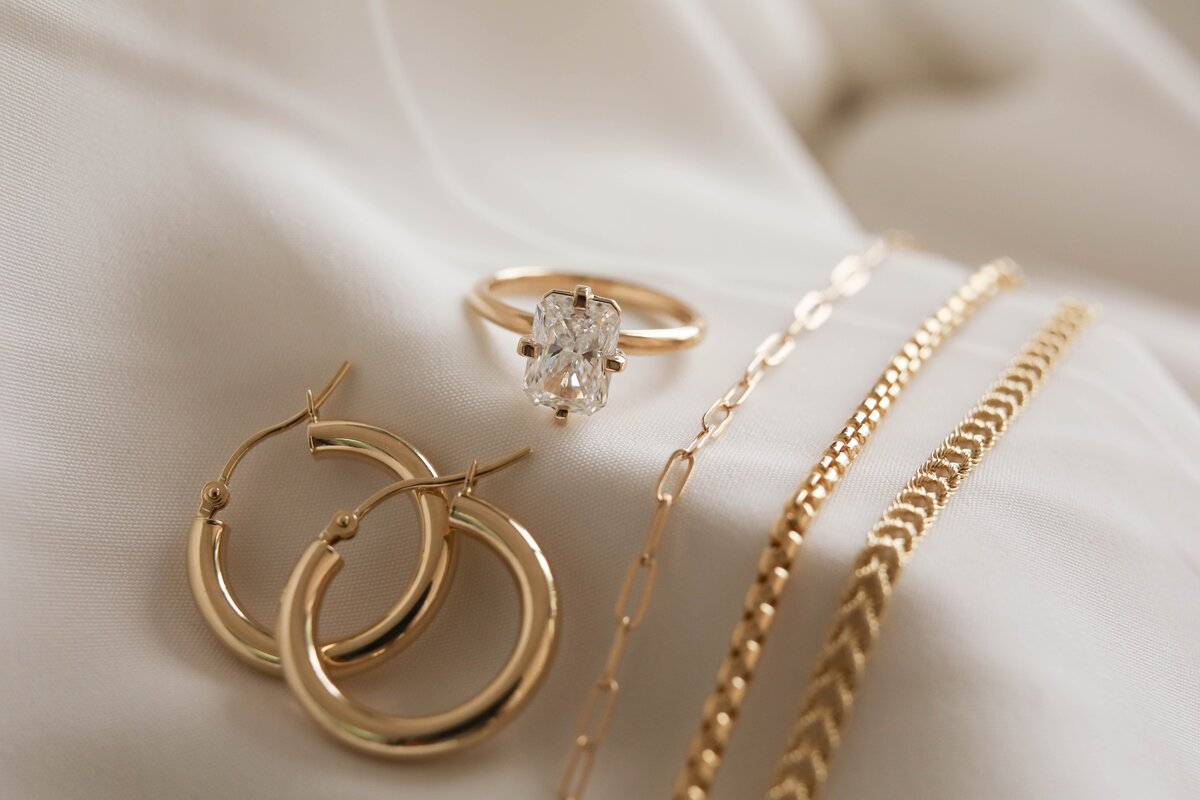
Moissanite Cuts and Settings
A solitaire round cut is the most popular cut and setting for moissanite engagement rings, though many cuts complement the brilliance and fire of moissanite.
Below are some of the most popular options available at Olive Ave Jewelry.
- Round cut
- Oval cut
- Radiant cut
- Emerald cut
- Marquise cut
- Pear cut
- Cushion cut
- Baguette cut
- Asscher cut
- Princess cut
Our made-to-order rings come in a range of stunning settings, including the vintage-inspired bezel, the glamorous hidden halo, the modern three-stone, and more. You may also choose from bands made of 14k yellow gold, 14k white gold, and 14k rose gold.
If you’re looking for a more customized piece, custom cuts and settings are an exciting possibility at Olive Ave Jewelry. Our expert jewelry team offers a tailored experience through email or virtual appointments, guiding you in selecting the perfect custom engagement and wedding rings that allow your moissanite gemstone to shine. If your diamond alternative dream ring isn’t in our online store, we can create it for you.
The possibilities are endless at Olive Ave Jewelry.
Hardness and Toughness
Moissanite is durable, tough, and extremely resistant to scratching and abrasion. With a hardness of 9.25-9.50, moissanite is harder than all other gemstones except diamond.
Moissanite exhibits more heat resistance than many other gemstones, including diamond. Tests prove that at 2,000ºF–higher than the equivalent intensity of a house fire–moissanite gems remain intact and as brilliant as the day they were created. This heat tolerance makes moissanite unlikely to suffer damage during jewelry repair.

Moissanite Brands

Always is Olive Ave’s signature moissanite brand. Each stone goes through a strict quality assurance process to ensure it meets our brilliance, cut, color, and clarity standards. We work directly with our manufacturer to bring you the best moissanite at an attainable price. With its excellent cut and appearance paired with our Limited Lifetime Warranty, Always is the perfect choice for those seeking an alternative to a traditional diamond.
Always Moissanite stones are considered colorless and have eye-clean clarity. All are cut to precision to maximize brilliance. Always Moissanites come with our Limited Lifetime Warranty, which means you’re covered in the event of breaking, chipping, discoloration, or damage. See our limited lifetime warranty terms for more details.

Charles & Colvard® is the original creator of lab-grown moissanite, setting the industry standard since 1995. They have spent this time refining the way they produce this beautiful, man-made gemstone. The world’s first colorless moissanite, Forever One™, has been created to deliver you an artfully crafted, socially responsible, and eternally brilliant gemstone.
Caring for Your Moissanite Engagement Ring
Moissanite is durable and tough and extremely resistant to scratching and abrasion. However, some maintenance is necessary to ensure your ring’s lasting beauty.
- Regular Cleaning: Clean your moissanite ring every three to four weeks to prevent the buildup of oils and dirt. You can make a simple cleaning solution by mixing the Olive Ave Cleaning Kit packet into water. Then, gently clean your ring with a soft brush. Rinse under running water and dry with a soft cloth.
- Personal Inspection: Check over your ring every once in a while to ensure it’s in top shape and is not in need of maintenance.
- Avoid Harsh Chemicals: Moissanite is durable, but chemicals can damage the metal setting. Remove your ring before using harsh cleaners or chemicals.
- Polishing: Over time, the metal band might lose its shine. Use a jewelry polishing cloth to maintain its luster. Be gentle to avoid scratching the metal or any softer stones in the setting.
- Proper Storage: When not wearing your ring, store it in a pouch or a jewelry box. This way, you’ll never lose track of your stunning ring.
- Activity Use: Moissanite is a durable gemstone, so you don’t need to worry about scratching it. It’s best to remove your ring during activities like cleaning, washing dishes, working out, doing laundry, or any other activities that may be hard on your hands.
- Removing Oil Slicks: Routine cleaning with a soft cloth and mild jewelry cleaner will help prevent oil slicks from forming. Avoid exposure to cleaning products, perfumes, and other harsh substances that can leave residue on the moissanite.
Follow these steps to ensure your moissanite keeps shining for decades.
Olive Ave Promise
Olive Ave Jewelry is the new face of a family-owned and operated jewelry company that has been in business for over 40 years. We focus on bringing our customers the highest-quality jewelry at the best price.
We are happy to offer our curated online selection or help you customize the perfect ring for the one you love. Explore our collection of moissanite engagement rings and reach out for a custom experience.
Our business is your happiness. Let us help you honor life’s big moments today.


